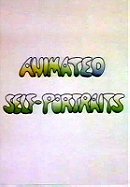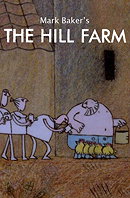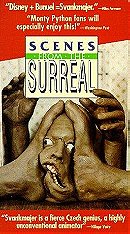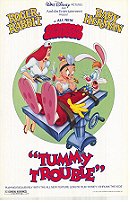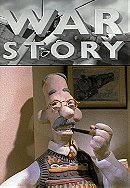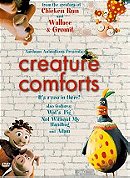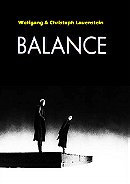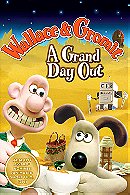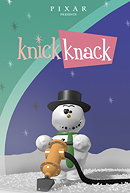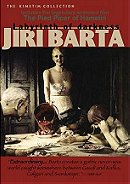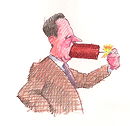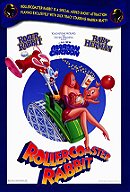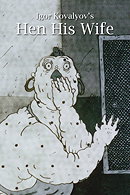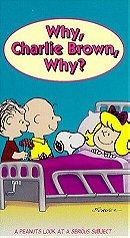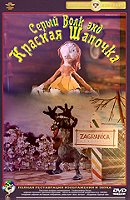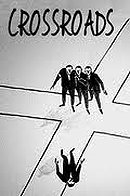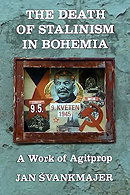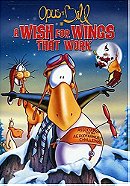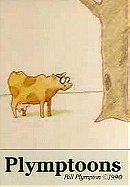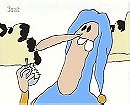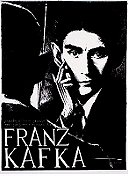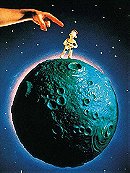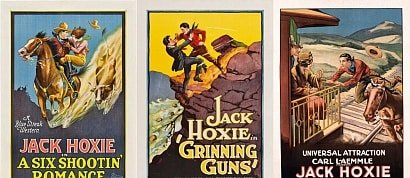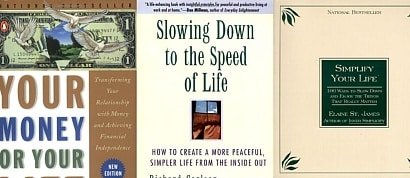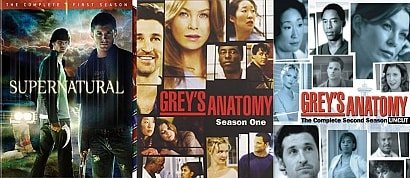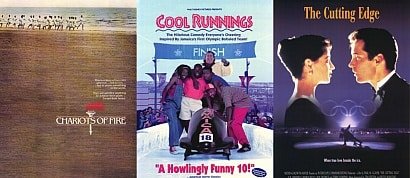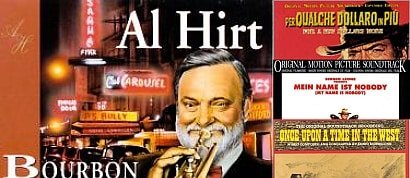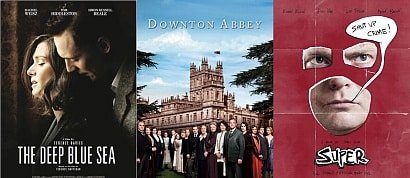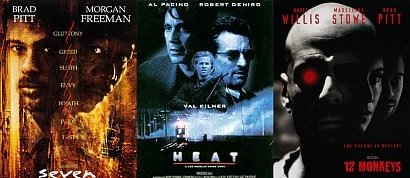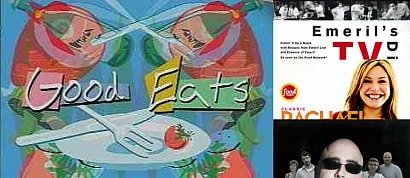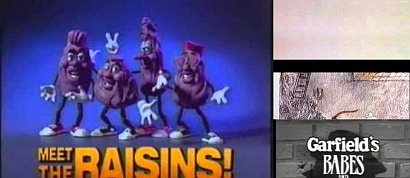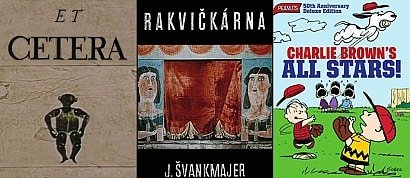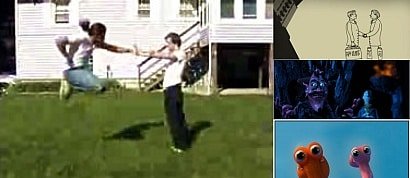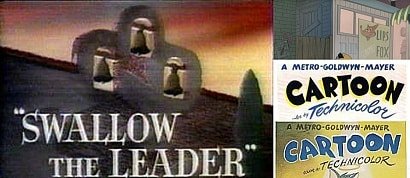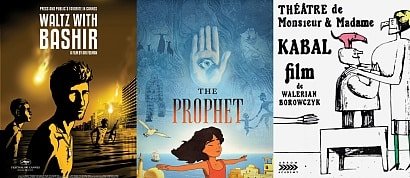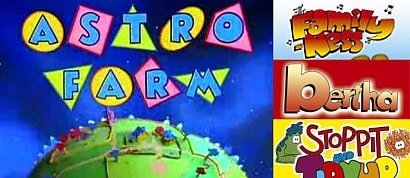1001 Animated Shorts You Must See - Part 13
Sort by:
Showing 50 items
Decade:
Rating:
List Type:
Meet the Raisins! (1988)
DIR: Barry Bruce
SUMMARY: A rockumentary on the amazing career of singing sensations The California Raisins.
WHY IT'S HERE: The most famous of Claymation pioneer Will Vinton's creations, The California Raisins became a genuine popular sensation in the mid to late 80s, after the huge success of their original appearances on adverts for raisins, in which they performed (of course) 'I Heard It Through the Grapevine'. After a scene-stealing appearance in Vinton's legendary 'A Claymation Christmas Celebration', The California Raisins were finally given their own short with 'Meet the Raisins!', an ingenious, acutely observed spoof of rockumentaries which is filled with corny gags, great animation and wonderful music. Vinton, though still heavily involved on the production side, handed the directorial reins to long-time collaborator Barry Bruce, who does Vinton's creations proud. For a fan of both animation and rock 'n' roll like myself, 'Meet the Raisins!' is a massive treat and the interviews and characters are recognisable from any number of rockumentaries. The short even comes complete with its own animated advertisements and trailers for fictional forthcoming shows. 'Meet the Raisins!' was so successful that it spawned a tie-in album, a cartoon series and, eventually, a sequel in the shape of 'Raisins: Sold Out!'.
SUMMARY: A rockumentary on the amazing career of singing sensations The California Raisins.
WHY IT'S HERE: The most famous of Claymation pioneer Will Vinton's creations, The California Raisins became a genuine popular sensation in the mid to late 80s, after the huge success of their original appearances on adverts for raisins, in which they performed (of course) 'I Heard It Through the Grapevine'. After a scene-stealing appearance in Vinton's legendary 'A Claymation Christmas Celebration', The California Raisins were finally given their own short with 'Meet the Raisins!', an ingenious, acutely observed spoof of rockumentaries which is filled with corny gags, great animation and wonderful music. Vinton, though still heavily involved on the production side, handed the directorial reins to long-time collaborator Barry Bruce, who does Vinton's creations proud. For a fan of both animation and rock 'n' roll like myself, 'Meet the Raisins!' is a massive treat and the interviews and characters are recognisable from any number of rockumentaries. The short even comes complete with its own animated advertisements and trailers for fictional forthcoming shows. 'Meet the Raisins!' was so successful that it spawned a tie-in album, a cartoon series and, eventually, a sequel in the shape of 'Raisins: Sold Out!'.
Animated Self-Portraits (1989)
DIR: David Ehrlich (producer)
SUMMARY: 19 renowned animators present 'animated self-portraits', attempted to explain themselves through their chosen medium.
WHY IT'S HERE: David Ehrlich's 'Animated Self-Portraits' is a short anthology of pieces by 19 different animators from various parts of the world. Like Marv Newland's 'Anijam', it is a fascinating attempt to bring together the work of some of the industries most respected names, but unlike Newland's film 'Animated Self-Portraits' does not attempt to create a cohesive experience. While Newland imposed restrictions on his animators (they had to use the same character and start with the closing frame of the previous animator's work), Ehrlich gives his directors free reign to create their self-representative pieces. Each piece is about 30 seconds or less in length and gives us a glimpse of how animators perceive themselves, in most cases with great humour and invention. Although it is a fascinating experience for anyone, 'Animated Self-Portraits' will be of special interest to animation fans who will instantly recognise the work of Jan Svankmajer, Sally Cruikshank, Bill Plympton and many others, even before the closing credits, which handily clarifies the artists behind the animations.
SUMMARY: 19 renowned animators present 'animated self-portraits', attempted to explain themselves through their chosen medium.
WHY IT'S HERE: David Ehrlich's 'Animated Self-Portraits' is a short anthology of pieces by 19 different animators from various parts of the world. Like Marv Newland's 'Anijam', it is a fascinating attempt to bring together the work of some of the industries most respected names, but unlike Newland's film 'Animated Self-Portraits' does not attempt to create a cohesive experience. While Newland imposed restrictions on his animators (they had to use the same character and start with the closing frame of the previous animator's work), Ehrlich gives his directors free reign to create their self-representative pieces. Each piece is about 30 seconds or less in length and gives us a glimpse of how animators perceive themselves, in most cases with great humour and invention. Although it is a fascinating experience for anyone, 'Animated Self-Portraits' will be of special interest to animation fans who will instantly recognise the work of Jan Svankmajer, Sally Cruikshank, Bill Plympton and many others, even before the closing credits, which handily clarifies the artists behind the animations.
The Hill Farm (1992)
DIR: Mark Baker
SUMMARY: Three days in the life of the inhabitants of an isolated farm, a group of visiting tourists, a gang of hunters and a large, sleepy bear.
WHY IT'S HERE: Before he became one of the creators of the hugely successful children's series 'Peppa Pig', Mark Baker made a handful of distinctly more downbeat, adult films. Deadpan, dark and hilarious, 'The Hill Farm' was Baker's debut film and bagged an Oscar nomination right off the bat. Watching this remarkable 18 minute short, it's not hard to understand why and 'The Hill Farm' has become a legendary piece of 80s animation, even if many viewers miss its dry appeal. 'The Hill Farm' takes place over three days on the titular farm and its surrounding area, in which the family's quiet life is interrupted by tourists and hunters who manage to stir up the wrath of a bear. The simple, sketchy artwork is hugely effective in creating an immersive little world and at no point does Baker attempt to present a cosy lie. The farmer's wife, for instance, repeatedly snaps the necks of chickens, the dull crack and completely emotionally disconnected way in which she does it raising a mordant laugh every time. However, Baker counterbalances any realism with a deliciously black penchant for absurdity. The vicious hunters, for instance, will apparently fire their guns at any living thing, even individual bees!
SUMMARY: Three days in the life of the inhabitants of an isolated farm, a group of visiting tourists, a gang of hunters and a large, sleepy bear.
WHY IT'S HERE: Before he became one of the creators of the hugely successful children's series 'Peppa Pig', Mark Baker made a handful of distinctly more downbeat, adult films. Deadpan, dark and hilarious, 'The Hill Farm' was Baker's debut film and bagged an Oscar nomination right off the bat. Watching this remarkable 18 minute short, it's not hard to understand why and 'The Hill Farm' has become a legendary piece of 80s animation, even if many viewers miss its dry appeal. 'The Hill Farm' takes place over three days on the titular farm and its surrounding area, in which the family's quiet life is interrupted by tourists and hunters who manage to stir up the wrath of a bear. The simple, sketchy artwork is hugely effective in creating an immersive little world and at no point does Baker attempt to present a cosy lie. The farmer's wife, for instance, repeatedly snaps the necks of chickens, the dull crack and completely emotionally disconnected way in which she does it raising a mordant laugh every time. However, Baker counterbalances any realism with a deliciously black penchant for absurdity. The vicious hunters, for instance, will apparently fire their guns at any living thing, even individual bees!
Darkness/Light/Darkness (1989)
DIR: Jan Svankmajer
SUMMARY: In a tiny room, various body parts meet up and begin to construct themselves into a human male.
WHY IT'S HERE: Although the very idea of disembodied limbs and organs slithering around independently may sound creepy, 'Darkness/Light/Darkness' is in fact one of Jan Svankmajer's most overtly comic films. It opens with a single hand dragging itself through the door of a room about the size of a doll's house lounge. Almost immediately, a pair of eyes roll through the other door and the fingers of the hand append them to themselves to create a sort of google-eyed puppet that is instantly amusing. Front here, the arrival of more and more body parts see the creation grow until the room is too small to contain it, leading to the ambiguous but disturbing final image. Although it does leave the viewer with plenty to think about, 'Darkness/Light/Darkness' is one of Svankmajer's most purely enjoyable films and just the opportunity to see a variety of human body parts moving independently is a treat. Of particular note is the grimly meaty squelch across the floor performed by the tongue, the sickening splosh made by the insertion of the eyeballs into the head and the hysterically shame-faced arrival of the penis and testicles.
SUMMARY: In a tiny room, various body parts meet up and begin to construct themselves into a human male.
WHY IT'S HERE: Although the very idea of disembodied limbs and organs slithering around independently may sound creepy, 'Darkness/Light/Darkness' is in fact one of Jan Svankmajer's most overtly comic films. It opens with a single hand dragging itself through the door of a room about the size of a doll's house lounge. Almost immediately, a pair of eyes roll through the other door and the fingers of the hand append them to themselves to create a sort of google-eyed puppet that is instantly amusing. Front here, the arrival of more and more body parts see the creation grow until the room is too small to contain it, leading to the ambiguous but disturbing final image. Although it does leave the viewer with plenty to think about, 'Darkness/Light/Darkness' is one of Svankmajer's most purely enjoyable films and just the opportunity to see a variety of human body parts moving independently is a treat. Of particular note is the grimly meaty squelch across the floor performed by the tongue, the sickening splosh made by the insertion of the eyeballs into the head and the hysterically shame-faced arrival of the penis and testicles.
DIR: Phil Roman, Bob Nesler, John Sparey
SUMMARY: On a dull, wet day, Garfield dons a trenchcoat and fedora he finds in a closet and disappears into a Film Noir fantasy.
WHY IT'S HERE: By 1989 the Garfield franchise was chugging along nicely. Having got several high quality TV specials under their belts, Film Roman had finally launched the inevitable tie-in TV series in 1988. 'Garfield and Friends' ran for seven seasons and did a fine job of keeping up the character's popularity with TV audiences. With the new series handling the everyday exploits of the fat orange cat, the TV specials that emerged alongside it began to get more ambitious and unusual. The feature length 'Garfield: His 9 Lives' from the previous year had been an excellent experiment in different animation styles and emotional tones of storytelling. Based on an experimental book by Garfield creator Jim Davis in which he examined Garfield's previous incarnations in a range of often more adult-oriented strips, 'Garfield: His 9 Lives' differed slightly from some of the book's content. Notably, a very promising strip in which Garfield was a detective was not included in the film. Fortunately, that was because it was being held back for a 25 minute special all of its own.
'Garfield's Babes and Bullets' takes place almost entirely in Garfield's fantasy that he is a detective in an old Film Noir mystery. The style of these hard-boiled detective films of the 40s and 50s is adopted completely, right down to the entire fantasy being in authentic black and white, a highly uncommercial but creatively inspired touch. The more adult source material is clear in many of the great jokes (Garfield's character is called Sam Spayed, for one!) and the suggestive relationship the cat has with several beautiful human women, all of whom have cat-based names like Kitty and Tanya O'Tabby, suggesting their humanisation is for the audience's benefit rather than a sign of any supressed cross-species desires! 'Garfield's Babes and Bullets' won a well-deserved Emmy for Outstanding Animated Program.
SUMMARY: On a dull, wet day, Garfield dons a trenchcoat and fedora he finds in a closet and disappears into a Film Noir fantasy.
WHY IT'S HERE: By 1989 the Garfield franchise was chugging along nicely. Having got several high quality TV specials under their belts, Film Roman had finally launched the inevitable tie-in TV series in 1988. 'Garfield and Friends' ran for seven seasons and did a fine job of keeping up the character's popularity with TV audiences. With the new series handling the everyday exploits of the fat orange cat, the TV specials that emerged alongside it began to get more ambitious and unusual. The feature length 'Garfield: His 9 Lives' from the previous year had been an excellent experiment in different animation styles and emotional tones of storytelling. Based on an experimental book by Garfield creator Jim Davis in which he examined Garfield's previous incarnations in a range of often more adult-oriented strips, 'Garfield: His 9 Lives' differed slightly from some of the book's content. Notably, a very promising strip in which Garfield was a detective was not included in the film. Fortunately, that was because it was being held back for a 25 minute special all of its own.
'Garfield's Babes and Bullets' takes place almost entirely in Garfield's fantasy that he is a detective in an old Film Noir mystery. The style of these hard-boiled detective films of the 40s and 50s is adopted completely, right down to the entire fantasy being in authentic black and white, a highly uncommercial but creatively inspired touch. The more adult source material is clear in many of the great jokes (Garfield's character is called Sam Spayed, for one!) and the suggestive relationship the cat has with several beautiful human women, all of whom have cat-based names like Kitty and Tanya O'Tabby, suggesting their humanisation is for the audience's benefit rather than a sign of any supressed cross-species desires! 'Garfield's Babes and Bullets' won a well-deserved Emmy for Outstanding Animated Program.
DIR: Rob Minkoff
SUMMARY: When Baby Herman swallows his rattle, Roger Rabbit takes him to the hospital where all hell breaks loose.
WHY IT'S HERE: Following the success of Robert Zemeckis's ingenious classic 'Who Framed Roger Rabbit', a series of Roger Rabbit shorts were made to accompany the screenings of several big films. After the successful opening scenes of the original movie (in which Roger and Baby Herman appear in their own cartoon which is abruptly brought into the real world when Roger "blows his lines") confirmed Roger's potential as a cartoon star in his own right, the idea seemed like a promising one but ultimately the frantic nature of the shorts were a tad too high-octane to sustain and the series was cancelled mid-way through production of its fourth short. For a short while, however, the Roger and Herman formula worked well and the trio of short films it produced are interesting curios filled with the same tips of the hat to classic animation that littered the original movie. 'Tummy Trouble' was released in cinemas as an opener for 'Honey, I Shrunk the Kids' and helped keep interest in the Roger Rabbit character going for a few more years. Future 'Lion King' director Rob Minkoff does a good job in the director's chair and the references to the film, including a live action closing sequence and the return of the original voice cast, all helped make 'Tummy Trouble' a higher quality production than the throwaway afterthought it could have been.
SUMMARY: When Baby Herman swallows his rattle, Roger Rabbit takes him to the hospital where all hell breaks loose.
WHY IT'S HERE: Following the success of Robert Zemeckis's ingenious classic 'Who Framed Roger Rabbit', a series of Roger Rabbit shorts were made to accompany the screenings of several big films. After the successful opening scenes of the original movie (in which Roger and Baby Herman appear in their own cartoon which is abruptly brought into the real world when Roger "blows his lines") confirmed Roger's potential as a cartoon star in his own right, the idea seemed like a promising one but ultimately the frantic nature of the shorts were a tad too high-octane to sustain and the series was cancelled mid-way through production of its fourth short. For a short while, however, the Roger and Herman formula worked well and the trio of short films it produced are interesting curios filled with the same tips of the hat to classic animation that littered the original movie. 'Tummy Trouble' was released in cinemas as an opener for 'Honey, I Shrunk the Kids' and helped keep interest in the Roger Rabbit character going for a few more years. Future 'Lion King' director Rob Minkoff does a good job in the director's chair and the references to the film, including a live action closing sequence and the return of the original voice cast, all helped make 'Tummy Trouble' a higher quality production than the throwaway afterthought it could have been.
DIR: Peter Lord
SUMMARY: WWII Veteran Bill Perry relates reminiscences about Bristol during The Blitz.
WHY IT'S HERE: Produced by Aardman Animations for Channel 4, 'War Story' was one of five short animations that made up the 'Lip Synch' series. Intended to be based around the idea of recorded dialogue, as with the previous 'Conversation Pieces' the studio had produced, the 'Lip Synch' series strayed a little from the format as Aardman founders Peter Lord and David Sproxton encouraged other Aardman staff to direct their own pieces. Lord's own 'War Story', however, sticks rigidly to the original pitch, with the dialogue all coming from a recording of an actual war veteran, Bill Perry, reminiscing about his youth during the Blitz. Perry's engaging and funny narration is coupled with the usual high quality animation associated with Aardman. The result is another winning and popular short which was somewhat overshadowed by one of Lord's own protégés Nick Park's contribution to the Lip Synch series, 'Creature Comforts', which went on to become one of the most famous pieces of animation ever.
SUMMARY: WWII Veteran Bill Perry relates reminiscences about Bristol during The Blitz.
WHY IT'S HERE: Produced by Aardman Animations for Channel 4, 'War Story' was one of five short animations that made up the 'Lip Synch' series. Intended to be based around the idea of recorded dialogue, as with the previous 'Conversation Pieces' the studio had produced, the 'Lip Synch' series strayed a little from the format as Aardman founders Peter Lord and David Sproxton encouraged other Aardman staff to direct their own pieces. Lord's own 'War Story', however, sticks rigidly to the original pitch, with the dialogue all coming from a recording of an actual war veteran, Bill Perry, reminiscing about his youth during the Blitz. Perry's engaging and funny narration is coupled with the usual high quality animation associated with Aardman. The result is another winning and popular short which was somewhat overshadowed by one of Lord's own protégés Nick Park's contribution to the Lip Synch series, 'Creature Comforts', which went on to become one of the most famous pieces of animation ever.
DIR: Nick Park
SUMMARY: A group of zoo animals are interviewed about their living conditions.
WHY IT'S HERE: As part of Aardman's 'Lip Synch' series of shorts, Nick Park made 'Creature Comforts' and, along with his first Wallace and Gromit short 'A Grand Day Out' which was released the same year, this film was largely responsible from turning the studio from a cult phenomenon into a household name. Following the brief for the 'Lip Synch' series, 'Creature Comforts' is based around a series of real interviews with members of the public about their living conditions. Park took these recordings and applied them to various animals in a zoo, making it seem as though they were talking about their own conditions. In some cases, such as the famous Brazilian mountain lion, Park asked his subjects to give personal answers but imagine they were a particular animal. The voice of the lion was a Brazilian student living in the UK but who missed his home. The attention to detail is phenomenal and the interviews themselves are often hilarious, particular the family of polar bears. 'Creature Comforts' is a wonderful, classic short which inspired a popular series of adverts and, eventually, a television series.
In 1990 two of Nick Park's shorts were up for the Oscar, 'A Grand Day Out' and Creature Comforts'. Although the former was a greater labour of love, it was 'Creature Comforts' that deservedly won. Unlike 'A Grand Day Out', 'Creature Comforts' has not really dated and its concept and execution are still superbly winning for all age groups.
SUMMARY: A group of zoo animals are interviewed about their living conditions.
WHY IT'S HERE: As part of Aardman's 'Lip Synch' series of shorts, Nick Park made 'Creature Comforts' and, along with his first Wallace and Gromit short 'A Grand Day Out' which was released the same year, this film was largely responsible from turning the studio from a cult phenomenon into a household name. Following the brief for the 'Lip Synch' series, 'Creature Comforts' is based around a series of real interviews with members of the public about their living conditions. Park took these recordings and applied them to various animals in a zoo, making it seem as though they were talking about their own conditions. In some cases, such as the famous Brazilian mountain lion, Park asked his subjects to give personal answers but imagine they were a particular animal. The voice of the lion was a Brazilian student living in the UK but who missed his home. The attention to detail is phenomenal and the interviews themselves are often hilarious, particular the family of polar bears. 'Creature Comforts' is a wonderful, classic short which inspired a popular series of adverts and, eventually, a television series.
In 1990 two of Nick Park's shorts were up for the Oscar, 'A Grand Day Out' and Creature Comforts'. Although the former was a greater labour of love, it was 'Creature Comforts' that deservedly won. Unlike 'A Grand Day Out', 'Creature Comforts' has not really dated and its concept and execution are still superbly winning for all age groups.
Balance (1989)
DIR: Wolfgang Laurenstein, Christoph Laurenstein
SUMMARY: The natural balance of a tiny society of identical men on an unstable platform is disrupted when one of them drags a large, heavy box into their world.
WHY IT'S HERE: German animators Wolfgang and Christoph Lauenstein's 'Balance' is a hauntingly superb stop-motion short which tells the cautionary tale of a group of thin, bald men who help each other maintain the balance of the shifting platform then live on by moving cooperatively according to the movements of those around them. When an interesting object is dragged onto the platform, curiosity and greed take over, leading to one of the most haunting final images of a film you'll ever see. 'Balance' reiterates a well-worn message but does so in a way that is more effective than the majority of meditations on similar themes. It's a stunning, creepy piece of work with a cold, Germanic feel and the expressionless marionettes are somehow able to communicate their thoughts and terrifying impulses through body language alone in a way not equalled since the classic films of Jiri Trnka. 'Balance' walked away with the Best Animated Short Oscar for 1989.
SUMMARY: The natural balance of a tiny society of identical men on an unstable platform is disrupted when one of them drags a large, heavy box into their world.
WHY IT'S HERE: German animators Wolfgang and Christoph Lauenstein's 'Balance' is a hauntingly superb stop-motion short which tells the cautionary tale of a group of thin, bald men who help each other maintain the balance of the shifting platform then live on by moving cooperatively according to the movements of those around them. When an interesting object is dragged onto the platform, curiosity and greed take over, leading to one of the most haunting final images of a film you'll ever see. 'Balance' reiterates a well-worn message but does so in a way that is more effective than the majority of meditations on similar themes. It's a stunning, creepy piece of work with a cold, Germanic feel and the expressionless marionettes are somehow able to communicate their thoughts and terrifying impulses through body language alone in a way not equalled since the classic films of Jiri Trnka. 'Balance' walked away with the Best Animated Short Oscar for 1989.
DIR: Nick Park
SUMMARY: When they find themselves dangerously low on cheese, inventor Wallace and his long-suffering dog Gromit decide to build a rocket and spend their bank holiday on the moon.
WHY IT'S HERE: Aardmann Animations' 'A Grand Day Out' established Nick Park's most popular creations, the quintessentially British duo Wallace and Gromit, but the film was originally begun as a student project in 1982. During the seven years it took to complete, Park was taken on by Aardman and allowed to continue working on the short on a part-time basis. Though it has dated in comparison with the pair's subsequent adventures, 'A Grand Day Out' is still a remarkable piece of work. It is more surreal and less narratively strong than later adventures and Wallace and Gromit are not quite fully developed but, given that this was a graduation film, it really is an incredible piece of work. Park's intention has been to pack a lot more plot into the short, with a cast of aliens who throw Wallace in prison, necessitating a jailbreak by Gromit. The aspirations of this kind of adventure plot would soon be realised in Park's subsequent shorts with the duo but, upon being told by his Aardman colleague that the creation of so much action would take about 9 years, Park rewrote the film with a simpler, somewhat bizarre story of a coin-operated stove who wants to take up skiing! Despite these compromises, 'A Grand Day Out' is a lovely piece of work and still extremely popular, regularly airing on TV alongside the subsequent Wallace and Gromit films.
SUMMARY: When they find themselves dangerously low on cheese, inventor Wallace and his long-suffering dog Gromit decide to build a rocket and spend their bank holiday on the moon.
WHY IT'S HERE: Aardmann Animations' 'A Grand Day Out' established Nick Park's most popular creations, the quintessentially British duo Wallace and Gromit, but the film was originally begun as a student project in 1982. During the seven years it took to complete, Park was taken on by Aardman and allowed to continue working on the short on a part-time basis. Though it has dated in comparison with the pair's subsequent adventures, 'A Grand Day Out' is still a remarkable piece of work. It is more surreal and less narratively strong than later adventures and Wallace and Gromit are not quite fully developed but, given that this was a graduation film, it really is an incredible piece of work. Park's intention has been to pack a lot more plot into the short, with a cast of aliens who throw Wallace in prison, necessitating a jailbreak by Gromit. The aspirations of this kind of adventure plot would soon be realised in Park's subsequent shorts with the duo but, upon being told by his Aardman colleague that the creation of so much action would take about 9 years, Park rewrote the film with a simpler, somewhat bizarre story of a coin-operated stove who wants to take up skiing! Despite these compromises, 'A Grand Day Out' is a lovely piece of work and still extremely popular, regularly airing on TV alongside the subsequent Wallace and Gromit films.
Knick Knack (1989) (1992)
DIR: John Lasseter
SUMMARY: A small snowman who lives in a snowglobe is beckoned over to join the bathing beauties in a Miami themed shelf ornament. But his attempts to break out of the snowglobe do not go according to plan.
WHY IT'S HERE: 'Knick Knack' was Pixar's final short film for eight years, as they would soon be making movie history with the feature length 'Toy Story'. In contract to the previous Pixar shorts by John Lasseter, which has mixed a range of emotions with visual experimentation, 'Knick Knack' is a purely comedic short made up mainly of geometric shapes, which was the strength of the computer they used at the time. After the headaches of trying to create a human character for the previous 'Tin Toy', the Pixar team were grateful to work on something less challenging and drew on their personal love of Chuck Jones, Tex Avery and Tom & Jerry cartoons to create a derivative story but in an innovative format. 'Knick Knack' works, although it stands out mainly due to its tonal difference from most Pixar shorts. The quest of the snowman to break out of his snowglobe is clearly motivated by sexual desire, something that was addressed in later rereleases of the film when Lasseter tweaked the original to reduce the size of the Miami beach temptresses breasts.
SUMMARY: A small snowman who lives in a snowglobe is beckoned over to join the bathing beauties in a Miami themed shelf ornament. But his attempts to break out of the snowglobe do not go according to plan.
WHY IT'S HERE: 'Knick Knack' was Pixar's final short film for eight years, as they would soon be making movie history with the feature length 'Toy Story'. In contract to the previous Pixar shorts by John Lasseter, which has mixed a range of emotions with visual experimentation, 'Knick Knack' is a purely comedic short made up mainly of geometric shapes, which was the strength of the computer they used at the time. After the headaches of trying to create a human character for the previous 'Tin Toy', the Pixar team were grateful to work on something less challenging and drew on their personal love of Chuck Jones, Tex Avery and Tom & Jerry cartoons to create a derivative story but in an innovative format. 'Knick Knack' works, although it stands out mainly due to its tonal difference from most Pixar shorts. The quest of the snowman to break out of his snowglobe is clearly motivated by sexual desire, something that was addressed in later rereleases of the film when Lasseter tweaked the original to reduce the size of the Miami beach temptresses breasts.
The Club of the Laid Off (1989)
DIR: Jiri Barta
SUMMARY: A group of old, discarded mannequins inhabit a dusty old warehouse in which they attempt to live a life akin to human routine. But trouble arises with the arrival of a new, younger group of mannequins.
WHY IT'S HERE: Jiri Barta's superb 'The Club of the Laid Off' creates a vivid alternative world in its 24 minutes. Barta's film is set in a dusty old warehouse which contains a group of old mannequins. Cracked and broken, the mannequins have been discarded and now attempt to live their days in an eerie approximation of human routine. Barta replays this routine a couple of times to highlight the monotony and the seemingly arbitrary importance that the mannequins adhere to this way of life. This importance is so high that, when a new box of discarded but younger mannequins arrives, violence erupts over the conflict between the new way and the old way. 'The Club of the Laid Off' is so brilliantly made and engaging that it can be enjoyed as a simple story but there are clearly layers of symbolism here. The film could be seen as a comment on shifting generations, ageism and the conflict between modern and archaic lifestyles but given that Barta is Czech, the film is clearly heavily influenced by the change Czechoslovakia underwent during the 80s from a socialist to consumer capitalist nation. This is highlighted in the final images of the film, as television becomes a new and dominant part of the mannequins' lives.
SUMMARY: A group of old, discarded mannequins inhabit a dusty old warehouse in which they attempt to live a life akin to human routine. But trouble arises with the arrival of a new, younger group of mannequins.
WHY IT'S HERE: Jiri Barta's superb 'The Club of the Laid Off' creates a vivid alternative world in its 24 minutes. Barta's film is set in a dusty old warehouse which contains a group of old mannequins. Cracked and broken, the mannequins have been discarded and now attempt to live their days in an eerie approximation of human routine. Barta replays this routine a couple of times to highlight the monotony and the seemingly arbitrary importance that the mannequins adhere to this way of life. This importance is so high that, when a new box of discarded but younger mannequins arrives, violence erupts over the conflict between the new way and the old way. 'The Club of the Laid Off' is so brilliantly made and engaging that it can be enjoyed as a simple story but there are clearly layers of symbolism here. The film could be seen as a comment on shifting generations, ageism and the conflict between modern and archaic lifestyles but given that Barta is Czech, the film is clearly heavily influenced by the change Czechoslovakia underwent during the 80s from a socialist to consumer capitalist nation. This is highlighted in the final images of the film, as television becomes a new and dominant part of the mannequins' lives.
Flora (1989)
DIR: Jan Svankmajer
SUMMARY: The decomposition of a woman made of vegetables is glimpsed fleetingly in this disturbing 30 second short.
WHY IT'S HERE: One of the shortest short films on the list, Jan Svankmajer's 'Flora' is astonishingly effective in its tiny timeframe. If you stumbled upon this film online you'd be forgiven for thinking it was unfinished or an extract from a longer piece, but no, 'Flora' is complete. This is all we are allowed to see of this particular scenario and the results are insistently haunting and genuinely leave the heart pounding. 'Flora' begins with a close up of rapidly rotting fruit and vegetables. We then see that this decaying food actually makes up the body of a humanoid plant woman who is tied to a bed with a desperately need glass of water just out of her reach. She squirms and struggles and then its over. The film is over, that is, because the exact fate of the creature is left unknown. Death seems to be immediately imminent but we aren't even granted the closure of seeing this. Meanwhile, the urgency of the noisy soundtrack is a pulse-pounding cacophony of unpleasant noises, including a police siren. Is this a sign of help on the way or just of the ongoing chaos of the world outside? Even if it is the former, the situation seems so damn urgent that little hope is implanted in the viewer's mind. In 30 seconds, 'Flora' sends chills down the viewer's spine and the first time you see it, it's akin to being punched in the face. There's an instinct to press that play button again instantly to confirm everything you have just failed to take in but there is also a feeling of terror at the very idea of doing so. Few animators, or filmmakers of any kind for that matter, could elicit such a response from viewers in such a brief runtime.
SUMMARY: The decomposition of a woman made of vegetables is glimpsed fleetingly in this disturbing 30 second short.
WHY IT'S HERE: One of the shortest short films on the list, Jan Svankmajer's 'Flora' is astonishingly effective in its tiny timeframe. If you stumbled upon this film online you'd be forgiven for thinking it was unfinished or an extract from a longer piece, but no, 'Flora' is complete. This is all we are allowed to see of this particular scenario and the results are insistently haunting and genuinely leave the heart pounding. 'Flora' begins with a close up of rapidly rotting fruit and vegetables. We then see that this decaying food actually makes up the body of a humanoid plant woman who is tied to a bed with a desperately need glass of water just out of her reach. She squirms and struggles and then its over. The film is over, that is, because the exact fate of the creature is left unknown. Death seems to be immediately imminent but we aren't even granted the closure of seeing this. Meanwhile, the urgency of the noisy soundtrack is a pulse-pounding cacophony of unpleasant noises, including a police siren. Is this a sign of help on the way or just of the ongoing chaos of the world outside? Even if it is the former, the situation seems so damn urgent that little hope is implanted in the viewer's mind. In 30 seconds, 'Flora' sends chills down the viewer's spine and the first time you see it, it's akin to being punched in the face. There's an instinct to press that play button again instantly to confirm everything you have just failed to take in but there is also a feeling of terror at the very idea of doing so. Few animators, or filmmakers of any kind for that matter, could elicit such a response from viewers in such a brief runtime.
25 Ways to Quit Smoking (1989)
DIR: Bill Plympton
SUMMARY: An instructional short on 25 extreme measures you can take to give up smoking.
WHY IT'S HERE: Bill Plympton's '25 Ways to Quit Smoking' take a similar spot-gag approach to his previous mock-instructional short 'How to Kiss' but unlike that film, which included a constant voiceover narration, '25 Ways to Quit Smoking' lets the jokes themselves do the talking. The only voiceover is a bored sounding narrator who announces each number over intertitles listing suggestions such as 'Make It Hard to Light Up', 'Use Aversion Therapy' and 'Lock Your Cigarettes in a Car on a Hot Day'. '25 Ways to Quit Smoking' is an improvement on 'How to Kiss' because the jokes are quicker, funnier and more numerous and there are so many that there are always a couple you've forgotten when you rewatch the short.
SUMMARY: An instructional short on 25 extreme measures you can take to give up smoking.
WHY IT'S HERE: Bill Plympton's '25 Ways to Quit Smoking' take a similar spot-gag approach to his previous mock-instructional short 'How to Kiss' but unlike that film, which included a constant voiceover narration, '25 Ways to Quit Smoking' lets the jokes themselves do the talking. The only voiceover is a bored sounding narrator who announces each number over intertitles listing suggestions such as 'Make It Hard to Light Up', 'Use Aversion Therapy' and 'Lock Your Cigarettes in a Car on a Hot Day'. '25 Ways to Quit Smoking' is an improvement on 'How to Kiss' because the jokes are quicker, funnier and more numerous and there are so many that there are always a couple you've forgotten when you rewatch the short.
DIR: Ralph Bakshi
SUMMARY: The Yooks and the Zooks are two opposing nations separated by a large wall. Their dispute over the proper side on which to butter bread quickly escalates into all out war, with more and more dangerous weapons being developed.
WHY IT'S HERE: Independent animator Ralph Bakshi is a cult director whose work I have never been fond of. The boundary pushing controversy of his early films felt overwhelmingly desperate in its insistent barrage of obscenity but at least showed a determined ambition in their more inventive scenes. His later films relied heavily on ugly technique of rotoscoping and largely fell flat in terms of storytelling. But for one TV special at least, my appreciation of Bakshi's work wholly matched up with my interest in it. His adaptation of Dr. Seuss's satire 'The Butter Battle Book' is at once the bleakest, most devastating Seuss adaptation and, according to Seuss himself, the most faithful. An allegory for the arms race with particular reference to the Cold War and the threat of nuclear destruction, 'The Butter Battle Book' is one of Seuss's most powerful and serious works and Bakshi lends his uncompromising style to its TV adaptation. There is a pleasingly rough edge to the sketchier way Seuss's creations are presented which it befitting of the more downbeat material and Bakshi manages to retain Seuss's unresolved ending in all its terrifying glory. While the story is clearly influenced by 'Gulliver's Travels', Seuss and Bakshi both do a great job of reproducing the idea in a way that both adults and children will appreciate. But not all fans of previous Seuss adaptations will warm so easily to this politically-charged piece. Watching as a double bill with 'How the Grinch Stole Christmas' for instance, 'The Butter Battle Book' is a very bitter pill to swallow.
SUMMARY: The Yooks and the Zooks are two opposing nations separated by a large wall. Their dispute over the proper side on which to butter bread quickly escalates into all out war, with more and more dangerous weapons being developed.
WHY IT'S HERE: Independent animator Ralph Bakshi is a cult director whose work I have never been fond of. The boundary pushing controversy of his early films felt overwhelmingly desperate in its insistent barrage of obscenity but at least showed a determined ambition in their more inventive scenes. His later films relied heavily on ugly technique of rotoscoping and largely fell flat in terms of storytelling. But for one TV special at least, my appreciation of Bakshi's work wholly matched up with my interest in it. His adaptation of Dr. Seuss's satire 'The Butter Battle Book' is at once the bleakest, most devastating Seuss adaptation and, according to Seuss himself, the most faithful. An allegory for the arms race with particular reference to the Cold War and the threat of nuclear destruction, 'The Butter Battle Book' is one of Seuss's most powerful and serious works and Bakshi lends his uncompromising style to its TV adaptation. There is a pleasingly rough edge to the sketchier way Seuss's creations are presented which it befitting of the more downbeat material and Bakshi manages to retain Seuss's unresolved ending in all its terrifying glory. While the story is clearly influenced by 'Gulliver's Travels', Seuss and Bakshi both do a great job of reproducing the idea in a way that both adults and children will appreciate. But not all fans of previous Seuss adaptations will warm so easily to this politically-charged piece. Watching as a double bill with 'How the Grinch Stole Christmas' for instance, 'The Butter Battle Book' is a very bitter pill to swallow.
Freedom of the Leg (1989)
DIR: Piotr Dumala
SUMMARY: A man's individual body parts live their own lives while he is sleeping, returning to him each morning. But one morning one of his legs decides it wants its independence.
WHY IT'S HERE: Polish director Pitor Dumala's work is beautifully rendered by scratching images into painted plaster, a technique he discovered while training to be a sculptor. The images Dumala creates are wonderfully detailed while retaining a sketch like simplicity at the same time. In the brilliant 'Wolnosc Nogi', Dumala tells the story of a man who deconstructs while sleeping, allowing his individual limbs, torso and head to roam freely during the night. The body parts become their own beasts, with the man's head animalistically consuming his own pet bird, whose skeleton he sadly regards in the morning. But on getting out of bed, the man discovers that one leg has failed to return to him and a frantic chance through the city ensues. The final image is surprisingly poetic, recasting a seemingly grotesque film in a whole different light. 'Wolnosc Nogi' is well worth seeing several times, as the first time round it takes a while to get a handle on the story. But ultimately this quietly surrealist short is a beautiful piece of work.
SUMMARY: A man's individual body parts live their own lives while he is sleeping, returning to him each morning. But one morning one of his legs decides it wants its independence.
WHY IT'S HERE: Polish director Pitor Dumala's work is beautifully rendered by scratching images into painted plaster, a technique he discovered while training to be a sculptor. The images Dumala creates are wonderfully detailed while retaining a sketch like simplicity at the same time. In the brilliant 'Wolnosc Nogi', Dumala tells the story of a man who deconstructs while sleeping, allowing his individual limbs, torso and head to roam freely during the night. The body parts become their own beasts, with the man's head animalistically consuming his own pet bird, whose skeleton he sadly regards in the morning. But on getting out of bed, the man discovers that one leg has failed to return to him and a frantic chance through the city ensues. The final image is surprisingly poetic, recasting a seemingly grotesque film in a whole different light. 'Wolnosc Nogi' is well worth seeing several times, as the first time round it takes a while to get a handle on the story. But ultimately this quietly surrealist short is a beautiful piece of work.
Exciting Love Story (1989)
DIR: Borivoj Dovnikovic-Bordo
SUMMARY: Mickey, a young man, goes on a quest through ever changing landscapes to find his love Gloria.
WHY IT'S HERE: Croatian animator Borivoj Dovnikovic-Bordo's 'Exciting Love Story' is a lovely little film in which the screen in divided up into eight equal rectangles through which the protagonist Mickey must search to find his love, Gloria. Whichever rectangle Mickey happens to be inhabiting at the time comes alive with a different backdrop from idyllic meadows to barren deserts and Mickey must also contend with breaking through, climbing over or tunnelling under the lines of separation. Dovnikovic-Bordo tinkers with his own rules as the short progresses, turning the screen on its side and filling uninhabited boxes with scenery as Gloria seems to be getting closer. The final joyous crumbling of the divisions is the perfect ending.
SUMMARY: Mickey, a young man, goes on a quest through ever changing landscapes to find his love Gloria.
WHY IT'S HERE: Croatian animator Borivoj Dovnikovic-Bordo's 'Exciting Love Story' is a lovely little film in which the screen in divided up into eight equal rectangles through which the protagonist Mickey must search to find his love, Gloria. Whichever rectangle Mickey happens to be inhabiting at the time comes alive with a different backdrop from idyllic meadows to barren deserts and Mickey must also contend with breaking through, climbing over or tunnelling under the lines of separation. Dovnikovic-Bordo tinkers with his own rules as the short progresses, turning the screen on its side and filling uninhabited boxes with scenery as Gloria seems to be getting closer. The final joyous crumbling of the divisions is the perfect ending.
Roller Coaster Rabbit (1990)
DIR: Rob Minkoff
SUMMARY: When Baby Herman chases his lost balloon at a fairground, Roger Rabbit must rescue him from a ludicrously extreme roller coaster ride.
WHY IT'S HERE: Released to accompany the live-action 'Dick Tracy', 'Roller Coaster Rabbit' was the second and best of the trio of Roger Rabbit shorts released in the wake of 'Who Framed Roger Rabbit's success. Once again relying on frantic pacing, 'Roller Coaster Rabbit' sees Roger pursuing the escaped Baby Herman around a dangerous fairground. Unlike the two other Roger shorts, 'Roller Coaster Rabbit' was slapped with a PG rating which is usually attributed to a scene in which Baby Herman grabs a bull's scrotum believing it to be his balloon. Far more likely a reason for the PG rating however is an oft-unacknowledged post-credits gag which still seems astonishingly filthy to this day. In a live action sequence in which Baby Herman has reverted to the cartoon actor with a "50 year old lust and a 3 year old dinky" from the original movie, he bursts a balloon held by a woman and, when she is startled, ask her "Whatsa matter Toots? Afraid of a little... bang?!"
SUMMARY: When Baby Herman chases his lost balloon at a fairground, Roger Rabbit must rescue him from a ludicrously extreme roller coaster ride.
WHY IT'S HERE: Released to accompany the live-action 'Dick Tracy', 'Roller Coaster Rabbit' was the second and best of the trio of Roger Rabbit shorts released in the wake of 'Who Framed Roger Rabbit's success. Once again relying on frantic pacing, 'Roller Coaster Rabbit' sees Roger pursuing the escaped Baby Herman around a dangerous fairground. Unlike the two other Roger shorts, 'Roller Coaster Rabbit' was slapped with a PG rating which is usually attributed to a scene in which Baby Herman grabs a bull's scrotum believing it to be his balloon. Far more likely a reason for the PG rating however is an oft-unacknowledged post-credits gag which still seems astonishingly filthy to this day. In a live action sequence in which Baby Herman has reverted to the cartoon actor with a "50 year old lust and a 3 year old dinky" from the original movie, he bursts a balloon held by a woman and, when she is startled, ask her "Whatsa matter Toots? Afraid of a little... bang?!"
Big Bang (1990)
DIR: Bruno Bozzetto
SUMMARY: A gardener and her slovenly husband have their quiet lives disrupted by the effects of pollution.
WHY IT'S HERE: Bruno Bozzetto's 'Big Bang' is an amusing minor work by the great director, which returns to the environmental issues he addressed in 'Mr. Rossi in Venice' but on a global scale this time. The image of the Earth as a giant landfill is unforgettable and the simple but effective message and final piece of basic wordplay make 'Big Bang' a suitable tool for teaching children about the effects of pollution.
SUMMARY: A gardener and her slovenly husband have their quiet lives disrupted by the effects of pollution.
WHY IT'S HERE: Bruno Bozzetto's 'Big Bang' is an amusing minor work by the great director, which returns to the environmental issues he addressed in 'Mr. Rossi in Venice' but on a global scale this time. The image of the Earth as a giant landfill is unforgettable and the simple but effective message and final piece of basic wordplay make 'Big Bang' a suitable tool for teaching children about the effects of pollution.
Next (1990)
DIR: Barry Purves
SUMMARY: William Shakespeare performs an audition in which he acts out representations of all his plays in pantomime.
WHY IT'S HERE: Made as part of Aardman Animations 'Lip Synch' series, Barry Purves's 'Next' strays from the original pitch of using actual recordings as a soundtrack, instead presenting a five minute short with no dialogue whatsoever. Aardman were obviously more dedicated to quality than to rigid pitches however, and while it may seem like a strange fit for the 'Lip Synch' series, 'Next' is one of the studio's finest ever films. The short focuses on a puppet version of William Shakespeare who, in an astonishingly expressive display of puppet pantomime, acts out representative sequences from every one of his plays in just five minutes. The producer watching this grand audition is a puppet version of theatre director Peter Hall but, in a final twist, he is also connected with another famous and even more influential Peter! For fans of Shakespeare in particular, 'Next' is a treat to watch and doubles as a guessing game as viewers can shout out which play is being portrayed now. Somewhat overlooked in the Aardman canon, 'Next' differs significantly from much of the studios output but in terms of quality it is right up there at the top.
SUMMARY: William Shakespeare performs an audition in which he acts out representations of all his plays in pantomime.
WHY IT'S HERE: Made as part of Aardman Animations 'Lip Synch' series, Barry Purves's 'Next' strays from the original pitch of using actual recordings as a soundtrack, instead presenting a five minute short with no dialogue whatsoever. Aardman were obviously more dedicated to quality than to rigid pitches however, and while it may seem like a strange fit for the 'Lip Synch' series, 'Next' is one of the studio's finest ever films. The short focuses on a puppet version of William Shakespeare who, in an astonishingly expressive display of puppet pantomime, acts out representative sequences from every one of his plays in just five minutes. The producer watching this grand audition is a puppet version of theatre director Peter Hall but, in a final twist, he is also connected with another famous and even more influential Peter! For fans of Shakespeare in particular, 'Next' is a treat to watch and doubles as a guessing game as viewers can shout out which play is being portrayed now. Somewhat overlooked in the Aardman canon, 'Next' differs significantly from much of the studios output but in terms of quality it is right up there at the top.
Hen, His Wife (1990)
DIR: Igor Kovalyov
SUMMARY: A family are visited by a mysterious stranger who throws their lives into disarray by pointing out that the wife is secretly a hen.
WHY IT'S HERE: Ukrainian director Igor Kovalyov is perhaps best known for working on Nickolodeon shows such as 'Rugrats' and 'Aaahh!!! Real Monsters' but his major motivation for this more commercially viable work was to fund his own extraordinarily uncommercial personal projects. 'Hen His Wife', one of the director's earliest shorts, is a comically absurd but tonally bleak domestic drama which uses ludicrous elements to explore familiar melodramatic tropes and deeper psychological implications. The extraordinarily ugly characters are brilliant creations, their graphically muscular or flabbily folded bodies being masterpieces of minute detail. The plot hinges on the patently ridiculous notion that the husband is unaware that his wife, who is obviously a giant hen, is a giant hen! This central premise may have been the inspiration for the ingeniously repetitive 'Chicken Boo' segments of 90s TV animation 'Animaniacs'. Looking for too rigid an explanation of the events that unfold in 'Hen His Wife' is pointless but to dismiss it as meaningless is equally pointless. Part of the shorts appeal is its openness to interpretation and the small, recognisable elements we draw meaning from amidst its uninviting world. If for nothing else, the film is worth seeing for the humanoid caterpillar creature that the family keep as a pet, whose ultimate fate is disturbingly ambiguous, like much else in the short.
SUMMARY: A family are visited by a mysterious stranger who throws their lives into disarray by pointing out that the wife is secretly a hen.
WHY IT'S HERE: Ukrainian director Igor Kovalyov is perhaps best known for working on Nickolodeon shows such as 'Rugrats' and 'Aaahh!!! Real Monsters' but his major motivation for this more commercially viable work was to fund his own extraordinarily uncommercial personal projects. 'Hen His Wife', one of the director's earliest shorts, is a comically absurd but tonally bleak domestic drama which uses ludicrous elements to explore familiar melodramatic tropes and deeper psychological implications. The extraordinarily ugly characters are brilliant creations, their graphically muscular or flabbily folded bodies being masterpieces of minute detail. The plot hinges on the patently ridiculous notion that the husband is unaware that his wife, who is obviously a giant hen, is a giant hen! This central premise may have been the inspiration for the ingeniously repetitive 'Chicken Boo' segments of 90s TV animation 'Animaniacs'. Looking for too rigid an explanation of the events that unfold in 'Hen His Wife' is pointless but to dismiss it as meaningless is equally pointless. Part of the shorts appeal is its openness to interpretation and the small, recognisable elements we draw meaning from amidst its uninviting world. If for nothing else, the film is worth seeing for the humanoid caterpillar creature that the family keep as a pet, whose ultimate fate is disturbingly ambiguous, like much else in the short.
Grasshoppers (1990)
DIR: Bruno Bozzetto
SUMMARY: While human beings do battle down the ages, the peaceful grasshoppers continue to go about their daily lives.
WHY IT'S HERE: 'Grasshoppers' saw a long overdue Oscar nomination for the wonderful Bruno Bozzetto and, while many of his previous films were more than worthy of consideration, 'Grasshoppers' remains one of his most perfect satires, a beautiful, funny, angry and sad film. Typically astute in its examination of human history and the domination of warfare which has destroyed civilisations, 'Grasshoppers' is less heavy-handed than some of Bozzetto's more on-the-nose films like 'Big Bang. It presents various scenes of destructive battles, interspersed with the tranquil image of the grasshoppers in the long grass. It's a lovely short which sadly arrived in a year with very strong competition, as the other two nominees were both by Nick Park and remain two of the most famous animated shorts out there today.
SUMMARY: While human beings do battle down the ages, the peaceful grasshoppers continue to go about their daily lives.
WHY IT'S HERE: 'Grasshoppers' saw a long overdue Oscar nomination for the wonderful Bruno Bozzetto and, while many of his previous films were more than worthy of consideration, 'Grasshoppers' remains one of his most perfect satires, a beautiful, funny, angry and sad film. Typically astute in its examination of human history and the domination of warfare which has destroyed civilisations, 'Grasshoppers' is less heavy-handed than some of Bozzetto's more on-the-nose films like 'Big Bang. It presents various scenes of destructive battles, interspersed with the tranquil image of the grasshoppers in the long grass. It's a lovely short which sadly arrived in a year with very strong competition, as the other two nominees were both by Nick Park and remain two of the most famous animated shorts out there today.
DIR: Sam Jaimes
SUMMARY: Janice is a new girl at school who befriends Linus. Their budding romance is put on hold when Janice is diagnosed with leukaemia.
WHY IT'S HERE: The first thing Peanuts fans will notice about 'Why Charlie Brown, Why' is the darker colour palette. Although the short begins with fairly standard antics involving Snoopy trying to hitch a ride on the school bus and Sally trying to get out of going to school, it all plays out under a depressing grey and black skyline. The key to these ominous colours lies in a small but significant moment during these opening scenes in which new girl Janice bumps herself while getting on the bus and is upset that her bruises are not going away lately. This is because Janice has cancer.
It becomes clear fairly quickly that 'Why Charlie Brown, Why' is quite different from other Peanuts shorts. While it is interspersed with little comedy interludes courtesy of Snoopy, the majority of this laudable TV special focuses on helping children understand the experience of going through a serious illness, both for the sufferer and those around them. So we get an honest account from Janice herself of the procedures she undergoes and how they make her feel but we also get to see the jealousy that all the attention Janice is getting provokes in her sisters. We see the ignorant fears of catching cancer through Lucy's cold attitude towards the situation. But most of all we see Linus's emotional journey as the life of the girl he likes hangs in the balance. It is Linus himself who intones the philosophical title and, in a heartbreaking scene, he loses it completely with a school bully who laughs at Janice's newly bald head.
The idea for 'Why Charlie Brown, Why' came from Sylvia Cook, a registered nurse who wrote to Charles Schulz with the suggestion. Though Schultz was initially doubtful, he eventually produced a wonderful TV special the taps into the emotions involved in such a situation without being overwhelmingly downbeat. The ending, which I won't spoil here, is particularly emotional and ends the film on a perfect note. Shown in schools and hospitals as well as on TV, 'Why Charlie Brown, Why' was further evidence of the ambition behind the Peanuts specials beyond simple entertainment. The tricky subject of cancer would not be tackled by an American children's cartoon again until 2009 when the brilliant series 'Arthur' focused on the subject in the episode 'The Great MacGrady.
SUMMARY: Janice is a new girl at school who befriends Linus. Their budding romance is put on hold when Janice is diagnosed with leukaemia.
WHY IT'S HERE: The first thing Peanuts fans will notice about 'Why Charlie Brown, Why' is the darker colour palette. Although the short begins with fairly standard antics involving Snoopy trying to hitch a ride on the school bus and Sally trying to get out of going to school, it all plays out under a depressing grey and black skyline. The key to these ominous colours lies in a small but significant moment during these opening scenes in which new girl Janice bumps herself while getting on the bus and is upset that her bruises are not going away lately. This is because Janice has cancer.
It becomes clear fairly quickly that 'Why Charlie Brown, Why' is quite different from other Peanuts shorts. While it is interspersed with little comedy interludes courtesy of Snoopy, the majority of this laudable TV special focuses on helping children understand the experience of going through a serious illness, both for the sufferer and those around them. So we get an honest account from Janice herself of the procedures she undergoes and how they make her feel but we also get to see the jealousy that all the attention Janice is getting provokes in her sisters. We see the ignorant fears of catching cancer through Lucy's cold attitude towards the situation. But most of all we see Linus's emotional journey as the life of the girl he likes hangs in the balance. It is Linus himself who intones the philosophical title and, in a heartbreaking scene, he loses it completely with a school bully who laughs at Janice's newly bald head.
The idea for 'Why Charlie Brown, Why' came from Sylvia Cook, a registered nurse who wrote to Charles Schulz with the suggestion. Though Schultz was initially doubtful, he eventually produced a wonderful TV special the taps into the emotions involved in such a situation without being overwhelmingly downbeat. The ending, which I won't spoil here, is particularly emotional and ends the film on a perfect note. Shown in schools and hospitals as well as on TV, 'Why Charlie Brown, Why' was further evidence of the ambition behind the Peanuts specials beyond simple entertainment. The tricky subject of cancer would not be tackled by an American children's cartoon again until 2009 when the brilliant series 'Arthur' focused on the subject in the episode 'The Great MacGrady.
DIR: Bill Plympton
SUMMARY: A couple dance a tango, interspersed with comedy interludes.
WHY IT'S HERE: Although it is not generally considered among his best shorts, for me 'Tango Schmango' is one of Bill Plympton's most ingenious and uniquely funny films. One of a handful of segments Plympton made that could be released as individual shorts but which ultimately ended up being inserted into his first feature film 'The Tune', 'Tango Schmango' derives its laughs from opposition. For the most part, the couple in the film dance a perfect tango which, while it does involve some of Plympton's classic shape-shifting animation (most brilliantly when the woman is rotated so quickly that she appears to become obese), also sees them hold the perfect composure of serious professional dancers. However, at three separate intervals the music stop and the man blandly tells the woman a terrible joke, after which she lets out an increasingly undignified howl of laughter. And then the dance resumes. It's such a strange idea that some will miss the humour altogether but it always makes me laugh almost as heartily as its female protagonist.
SUMMARY: A couple dance a tango, interspersed with comedy interludes.
WHY IT'S HERE: Although it is not generally considered among his best shorts, for me 'Tango Schmango' is one of Bill Plympton's most ingenious and uniquely funny films. One of a handful of segments Plympton made that could be released as individual shorts but which ultimately ended up being inserted into his first feature film 'The Tune', 'Tango Schmango' derives its laughs from opposition. For the most part, the couple in the film dance a perfect tango which, while it does involve some of Plympton's classic shape-shifting animation (most brilliantly when the woman is rotated so quickly that she appears to become obese), also sees them hold the perfect composure of serious professional dancers. However, at three separate intervals the music stop and the man blandly tells the woman a terrible joke, after which she lets out an increasingly undignified howl of laughter. And then the dance resumes. It's such a strange idea that some will miss the humour altogether but it always makes me laugh almost as heartily as its female protagonist.
Toxic (1990)
DIR: Andrew McEwan
SUMMARY: A group of preserved animals climb out of their jars and head out into the world where they encounter a vicious enemy.
WHY IT'S HERE: British artist Andrew McEwan is a man who is constantly changing artistic direction. He has worked as an animator, painter, sculptor and musician as well as assistant director on big films such as 'Shaun of the Dead', 'Tinker, Tailor, Soldier, Spy' and 'Children of Men'. Back in 1990, McEwan won a BAFTA award for his animated short 'Toxic', a disturbing adventure film in which a gang of apparently dead animals return to life, shake off the formaldehyde and prepare to do battle with a Harryhausen-esque enemy. Visually striking, 'Toxic' isn't the most narratively coherent of films but that was clearly not the intention. Instead, it evokes a twilight world of unsettling happenings far beyond the comprehension of the sleeping human race.
SUMMARY: A group of preserved animals climb out of their jars and head out into the world where they encounter a vicious enemy.
WHY IT'S HERE: British artist Andrew McEwan is a man who is constantly changing artistic direction. He has worked as an animator, painter, sculptor and musician as well as assistant director on big films such as 'Shaun of the Dead', 'Tinker, Tailor, Soldier, Spy' and 'Children of Men'. Back in 1990, McEwan won a BAFTA award for his animated short 'Toxic', a disturbing adventure film in which a gang of apparently dead animals return to life, shake off the formaldehyde and prepare to do battle with a Harryhausen-esque enemy. Visually striking, 'Toxic' isn't the most narratively coherent of films but that was clearly not the intention. Instead, it evokes a twilight world of unsettling happenings far beyond the comprehension of the sleeping human race.
Door (1990)
DIR: David Anderson
SUMMARY: A man and a woman are faced with a large, floating sphere filled with doors and many keys which fit them. Their vaguely defined quest leads them into a debate about the meaning of one specific key.
WHY IT'S HERE: The first of two animated collaborations between director David Anderson and author Russell Hoban, 'Door' is an unclassifiable short which I remember seeing as a child when it was unceremoniously rammed into an unexpectedly available but inappropriate timeslot. At the time, me and my brothers didn't know what to make of it, although my oldest brother Matthew was the only one who sensed something good in it. After that we would often mock 'Door' by mimicking Russell Hoban's distinctive, beat-poet-esque narration (although we were too unimaginative to come up with any lines other than "and he said don't open that door", which we repeated ad nauseam). The memory of 'Door' faded by never quite disappeared and years later I became obsessed with finding the short. Eventually I managed it and was glad I did because, as I had expected, I discovered that from my more mature point of view the film was in fact excellent.
Screened, along with its companion piece 'Deadsy', under the subheading 'Dead Time Stories for Big Folks', 'Door' is a brilliant tale of human curiosity and the potential repercussions of taking it too far. Hoban's unique narration is dry, flat, cool and skilful, relishing the mangled English in which it is delivered. Anderson's accompanying images are perfect for the material, switching between a fascinating stop-motion sphere presented in 3D and filled with opening and closing doors which reveal odd images behind them, and a flat, black and white world in which the protagonists are presented as cut-outs and slither around the ground like children's playthings. The final images and narration cast 'Door' in a blackly comic light, although Hoban's writing mixes the amusing and chilling in about equal measures. Ultimately, 'Door' has become something of a personal trophy, a half-forgotten memory exhumed from the naivety of childhood and rescued by the perspective of adulthood. That I had to try many keys and open many doors to find the thing just makes it all the more delicious!
SUMMARY: A man and a woman are faced with a large, floating sphere filled with doors and many keys which fit them. Their vaguely defined quest leads them into a debate about the meaning of one specific key.
WHY IT'S HERE: The first of two animated collaborations between director David Anderson and author Russell Hoban, 'Door' is an unclassifiable short which I remember seeing as a child when it was unceremoniously rammed into an unexpectedly available but inappropriate timeslot. At the time, me and my brothers didn't know what to make of it, although my oldest brother Matthew was the only one who sensed something good in it. After that we would often mock 'Door' by mimicking Russell Hoban's distinctive, beat-poet-esque narration (although we were too unimaginative to come up with any lines other than "and he said don't open that door", which we repeated ad nauseam). The memory of 'Door' faded by never quite disappeared and years later I became obsessed with finding the short. Eventually I managed it and was glad I did because, as I had expected, I discovered that from my more mature point of view the film was in fact excellent.
Screened, along with its companion piece 'Deadsy', under the subheading 'Dead Time Stories for Big Folks', 'Door' is a brilliant tale of human curiosity and the potential repercussions of taking it too far. Hoban's unique narration is dry, flat, cool and skilful, relishing the mangled English in which it is delivered. Anderson's accompanying images are perfect for the material, switching between a fascinating stop-motion sphere presented in 3D and filled with opening and closing doors which reveal odd images behind them, and a flat, black and white world in which the protagonists are presented as cut-outs and slither around the ground like children's playthings. The final images and narration cast 'Door' in a blackly comic light, although Hoban's writing mixes the amusing and chilling in about equal measures. Ultimately, 'Door' has become something of a personal trophy, a half-forgotten memory exhumed from the naivety of childhood and rescued by the perspective of adulthood. That I had to try many keys and open many doors to find the thing just makes it all the more delicious!
DIR: David Anderson
SUMMARY: A sadistic weapons-obsessive turns his passions on his own body when he decides to have a sex change operation.
WHY IT'S HERE: Using a combination of live action, xerography, hand-rendering, laser xerography and model animation, 'Deadsy' is the second of David Anderson's collaborations with writer Russell Hoban. Although it is more difficult to get a handle on than their other collaboration 'Door', 'Deadsy' is also more ambitious and disturbing. The mood is pitched somewhere between the ominously spooky and smirkingly jocular, as the title character's obsession with weaponry develops into a fixation on sexual organs, ultimately leading him to have a sex change. Unlike any other animated short you've seen (even 'Door'), 'Deadsy' thrives on Hoban's cleverly twisted script and laid-back narration that sounds like the bastard child of Allen Ginsberg and Staley Unwin!
SUMMARY: A sadistic weapons-obsessive turns his passions on his own body when he decides to have a sex change operation.
WHY IT'S HERE: Using a combination of live action, xerography, hand-rendering, laser xerography and model animation, 'Deadsy' is the second of David Anderson's collaborations with writer Russell Hoban. Although it is more difficult to get a handle on than their other collaboration 'Door', 'Deadsy' is also more ambitious and disturbing. The mood is pitched somewhere between the ominously spooky and smirkingly jocular, as the title character's obsession with weaponry develops into a fixation on sexual organs, ultimately leading him to have a sex change. Unlike any other animated short you've seen (even 'Door'), 'Deadsy' thrives on Hoban's cleverly twisted script and laid-back narration that sounds like the bastard child of Allen Ginsberg and Staley Unwin!
Two Sisters (1991)
DIR: Caroline Leaf
SUMMARY: Two sisters, one of whom is terribly deformed, live on an isolated island, When a stranger arrives on the island, their world is turned upside down.
WHY IT'S HERE: Caroline Leaf's 'Two Sisters' has the distinctive look that characterises all Leaf's work. Etched directly onto tinted film stock, the film juxtaposes Leaf's usual dark colours with flashes of vibrant blue and red, symbolising the contrast between the outside world and the dark captivity in which the intelligent but deformed Viola and her over-protective sister live. The story is short, simple but filled with possible connotations and the moody but ever-so-slightly hopeful atmosphere is beautifully reflected in Leaf's shape-shifting etchings.
SUMMARY: Two sisters, one of whom is terribly deformed, live on an isolated island, When a stranger arrives on the island, their world is turned upside down.
WHY IT'S HERE: Caroline Leaf's 'Two Sisters' has the distinctive look that characterises all Leaf's work. Etched directly onto tinted film stock, the film juxtaposes Leaf's usual dark colours with flashes of vibrant blue and red, symbolising the contrast between the outside world and the dark captivity in which the intelligent but deformed Viola and her over-protective sister live. The story is short, simple but filled with possible connotations and the moody but ever-so-slightly hopeful atmosphere is beautifully reflected in Leaf's shape-shifting etchings.
DIR: Garri Bardin
SUMMARY: Little Red Riding Hood takes a pie from Moscow to Paris for her Grandma, all the while trying to avoid the Wolf, who has a new set of stainless steel teeth.
WHY IT'S HERE: Garri Bardin's exquisite reimagining of the 'Little Red Riding Hood' story is a landmark Russian animation by Garri Bardin, which joyfully examines the crumbling of the old Soviet Union while still presenting an enjoyable fairy tale that children will appreciate on a different level. As well as its political allusions, 'Grey Wolf and Little Red Riding Hood' is also stuffed with references to classic animation and songs. The majority of the dialogue is set to music, with familiar tunes like 'Mack the Knife' and 'La Vie En Rose' given new lyrics about hunger, teeth and pies! Bardin's crude Claymation figures are perfect, creating a creepily grotesque world in which the initially gaunt wolf is able to consume two thirds of the film's cast, including Claymation versions of Disney's 3 little pigs and seven dwarves. Also making a cameo are icons of Russian animation Gena the Crocodile and Cheburashka, who also end up sitting undigested in the wolf's stomach. Lively and compellingly weird, with wonderfully wonky sets and awkwardly lumpy characters, Bardin has created a masterpiece in 'Grey Wolf and Little Red Riding Hood', at whatever level you choose to engage with it.
SUMMARY: Little Red Riding Hood takes a pie from Moscow to Paris for her Grandma, all the while trying to avoid the Wolf, who has a new set of stainless steel teeth.
WHY IT'S HERE: Garri Bardin's exquisite reimagining of the 'Little Red Riding Hood' story is a landmark Russian animation by Garri Bardin, which joyfully examines the crumbling of the old Soviet Union while still presenting an enjoyable fairy tale that children will appreciate on a different level. As well as its political allusions, 'Grey Wolf and Little Red Riding Hood' is also stuffed with references to classic animation and songs. The majority of the dialogue is set to music, with familiar tunes like 'Mack the Knife' and 'La Vie En Rose' given new lyrics about hunger, teeth and pies! Bardin's crude Claymation figures are perfect, creating a creepily grotesque world in which the initially gaunt wolf is able to consume two thirds of the film's cast, including Claymation versions of Disney's 3 little pigs and seven dwarves. Also making a cameo are icons of Russian animation Gena the Crocodile and Cheburashka, who also end up sitting undigested in the wolf's stomach. Lively and compellingly weird, with wonderfully wonky sets and awkwardly lumpy characters, Bardin has created a masterpiece in 'Grey Wolf and Little Red Riding Hood', at whatever level you choose to engage with it.
Dancing (1991)
DIR: Bruno Bozzetto
SUMMARY: A lone man on an island dances happily in his colourful hat. When the Grim Reaper arrives to collect him, the man fears his dancing days are done...
WHY IT'S HERE: Bruno Bozzetto's 'Dancing' epitomises a tendency of the director's late 80s and early 90s films towards the brief but effectively to the point. Like its predecessor, 'Big Bang', in 'Dancing' Bozzetto says a lot about life in a comparatively small space of time and with great humour and originality. For a short that takes place in such an isolated location, 'Dancing' is bursting with energy and viewer's are left with much to discuss after the film's few big laughs. Dancing with Death has never been so much fun!
SUMMARY: A lone man on an island dances happily in his colourful hat. When the Grim Reaper arrives to collect him, the man fears his dancing days are done...
WHY IT'S HERE: Bruno Bozzetto's 'Dancing' epitomises a tendency of the director's late 80s and early 90s films towards the brief but effectively to the point. Like its predecessor, 'Big Bang', in 'Dancing' Bozzetto says a lot about life in a comparatively small space of time and with great humour and originality. For a short that takes place in such an isolated location, 'Dancing' is bursting with energy and viewer's are left with much to discuss after the film's few big laughs. Dancing with Death has never been so much fun!
Blackfly (1991)
DIR: Christopher Hinton
SUMMARY: A surveyor who is new to North Ontario encounters the troublesome black flies whichever way he turns.
WHY IT'S HERE: Chris Hinton's National Film Board of Canada short 'Blackfly' is a little known short that I absolutely love and which bagged Hinton his first of two Oscar nominations. Set to classic Canadian folk tune 'The Black Fly Song' by Wade Hemsworth, Hinton's film wittily charts Hemsworth's time working in North Ontario where he was constantly plagued by the insects of the title. Unlike the loose scribbles of Hinton's later independent work, 'Blackfly' has an appealingly cartoony look which recalls the classic shorts of Richard Condie and Cordell Baker. The images, which are hilarious, are perfectly married up with the infectiously catchy folk tune to create a wonderful animated music video which I always end up watching at least three times in a tow every time I put it on. It's a simple but unbelievably enjoyable cartoon that I just can't get enough of.
SUMMARY: A surveyor who is new to North Ontario encounters the troublesome black flies whichever way he turns.
WHY IT'S HERE: Chris Hinton's National Film Board of Canada short 'Blackfly' is a little known short that I absolutely love and which bagged Hinton his first of two Oscar nominations. Set to classic Canadian folk tune 'The Black Fly Song' by Wade Hemsworth, Hinton's film wittily charts Hemsworth's time working in North Ontario where he was constantly plagued by the insects of the title. Unlike the loose scribbles of Hinton's later independent work, 'Blackfly' has an appealingly cartoony look which recalls the classic shorts of Richard Condie and Cordell Baker. The images, which are hilarious, are perfectly married up with the infectiously catchy folk tune to create a wonderful animated music video which I always end up watching at least three times in a tow every time I put it on. It's a simple but unbelievably enjoyable cartoon that I just can't get enough of.
Crossroads (1991)
DIR: Raimund Krumme
SUMMARY: A man picks his way around a simple looking crossroads but as the perspective constantly shifts and he encounters a group of obstructive, similarly dressed men he realises there might be more to choosing a direction than meets the eye.
WHY IT'S HERE: Like his earlier short 'Rope Dance', Raimund Krumme's 'Crossroads' is a series of ingenious shifts in perspective to create a metaphorical mindgame. In the case of 'Crossroads', Krumme tackles the difficulty of decision-making when surrounded by constantly shifting perspectives and other people's not-always-helpful influences. The character design is simple but the tricky visuals make 'Crossroads' a constantly fascinating watch as it is impossible to let your mind settle into one perspective before the film shifts to another. Like 'Rope Dance', 'Crossroads' perhaps overstays its welcome by a few minutes but ultimately it is a very clever, fascinating and frustrating little film which can leave the viewer as muddle-headed as the trials and tribulations of real life.
SUMMARY: A man picks his way around a simple looking crossroads but as the perspective constantly shifts and he encounters a group of obstructive, similarly dressed men he realises there might be more to choosing a direction than meets the eye.
WHY IT'S HERE: Like his earlier short 'Rope Dance', Raimund Krumme's 'Crossroads' is a series of ingenious shifts in perspective to create a metaphorical mindgame. In the case of 'Crossroads', Krumme tackles the difficulty of decision-making when surrounded by constantly shifting perspectives and other people's not-always-helpful influences. The character design is simple but the tricky visuals make 'Crossroads' a constantly fascinating watch as it is impossible to let your mind settle into one perspective before the film shifts to another. Like 'Rope Dance', 'Crossroads' perhaps overstays its welcome by a few minutes but ultimately it is a very clever, fascinating and frustrating little film which can leave the viewer as muddle-headed as the trials and tribulations of real life.
Father Christmas (1991)
DIR: Dave Unwin
SUMMARY: Father Christmas decides to go on holiday to relax after another busy Christmas but he encounters numerous problems at the various places he visits. Ultimately, the Christmas period cannot be put off forever and he sets out on another night-flight to deliver presents to the children of the world.
WHY IT'S HERE: Another Christmas cartoon adapted from the works of Raymond Briggs, 'Father Christmas' takes place in the same universe as Christmas classic 'The Snowman' and is very much made in the same style, even if the material is slightly less melancholy-tinged. This is due to the fact that the film was storyboarded by 'The Snowman' director Dianne Jackson and was due to be directed by her as well, but sadly she was suffering from cancer (from which she died the following year) and the reins were passed to Dave Unwin instead. Unwin does a fine job of recreating Jackson's style but with an added splash of irreverent humour, making 'The Snowman' and 'Father Christmas' favourites to be screened back to back during the Christmas period.
Voiced by comedian Mel Smith, 'Father Christmas' is surprisingly crude in places. The traditional jolly central character is depicted as curmudgeonly, gluttonous and heavy-drinking, leading to scenes of drunkenness, hangovers and excessive diarrhoea. A distinctly less enjoyable American version of the film removes all of these scenes and, revoiced by William Dennis Hunt, makes Father Christmas far jollier and removes all instances of his much used phrase "Bloomin'", replacing it with "Merry". This, of course, sucks everything that is unique and appealing out of 'Father Christmas' and viewers are advised to stick with the original.
'Father Christmas' is based on two Raymond Briggs books, 'Father Christmas' and 'Father Christmas Goes on Holiday', and the film nicely merges the two stories, giving us an initial glimpse of what Father Christmas gets up to for the rest of the year, before ending with a triumphant Christmas delivery, accompanied by the charming song 'Another Bloomin' Christmas'. Mel Smith is excellent as the voice of Father Christmas, making him grumbly and irritable but also sympathetic, kind and dedicated. Unwin ties the short to several other Raymond Briggs creations. Ernest the milkman from the book 'Ethel and Ernest' is seen on his rounds and the snowman and the boy from 'The Snowman' are seen once again partying with Father Christmas, reassuring anyone upset by the original ending of that short that the snowman would come back every winter. Less reassuring, however, is the presence of Jim and Hilda Bloggs from Briggs' darkest work 'When the Wind Blows'. These characters are seen drinking in a Scottish pub while Father Christmas is on holiday. Given that their ultimate fate is to die from the fallout of nuclear war, imagining them as part of the same universe as 'The Snowman' and 'Father Christmas' is somewhat troubling!
SUMMARY: Father Christmas decides to go on holiday to relax after another busy Christmas but he encounters numerous problems at the various places he visits. Ultimately, the Christmas period cannot be put off forever and he sets out on another night-flight to deliver presents to the children of the world.
WHY IT'S HERE: Another Christmas cartoon adapted from the works of Raymond Briggs, 'Father Christmas' takes place in the same universe as Christmas classic 'The Snowman' and is very much made in the same style, even if the material is slightly less melancholy-tinged. This is due to the fact that the film was storyboarded by 'The Snowman' director Dianne Jackson and was due to be directed by her as well, but sadly she was suffering from cancer (from which she died the following year) and the reins were passed to Dave Unwin instead. Unwin does a fine job of recreating Jackson's style but with an added splash of irreverent humour, making 'The Snowman' and 'Father Christmas' favourites to be screened back to back during the Christmas period.
Voiced by comedian Mel Smith, 'Father Christmas' is surprisingly crude in places. The traditional jolly central character is depicted as curmudgeonly, gluttonous and heavy-drinking, leading to scenes of drunkenness, hangovers and excessive diarrhoea. A distinctly less enjoyable American version of the film removes all of these scenes and, revoiced by William Dennis Hunt, makes Father Christmas far jollier and removes all instances of his much used phrase "Bloomin'", replacing it with "Merry". This, of course, sucks everything that is unique and appealing out of 'Father Christmas' and viewers are advised to stick with the original.
'Father Christmas' is based on two Raymond Briggs books, 'Father Christmas' and 'Father Christmas Goes on Holiday', and the film nicely merges the two stories, giving us an initial glimpse of what Father Christmas gets up to for the rest of the year, before ending with a triumphant Christmas delivery, accompanied by the charming song 'Another Bloomin' Christmas'. Mel Smith is excellent as the voice of Father Christmas, making him grumbly and irritable but also sympathetic, kind and dedicated. Unwin ties the short to several other Raymond Briggs creations. Ernest the milkman from the book 'Ethel and Ernest' is seen on his rounds and the snowman and the boy from 'The Snowman' are seen once again partying with Father Christmas, reassuring anyone upset by the original ending of that short that the snowman would come back every winter. Less reassuring, however, is the presence of Jim and Hilda Bloggs from Briggs' darkest work 'When the Wind Blows'. These characters are seen drinking in a Scottish pub while Father Christmas is on holiday. Given that their ultimate fate is to die from the fallout of nuclear war, imagining them as part of the same universe as 'The Snowman' and 'Father Christmas' is somewhat troubling!
Push Comes to Shove (1991)
DIR: Bill Plympton
SUMMARY: Two deadpan men engage in a turn-based physical battle... until one of them goes too far.
WHY IT'S HERE: Another short that Bill Plympton later inserted into his first feature film 'The Tune', 'Push Comes to Shove' is basically an excuse for more of Plympton's grotesquely comic facial mutilations. Made up entirely of two men calmly, silently hurting each other in a series of inventive ways, 'Push Comes to Shove' establishes its premise quickly and then thrives on the audiences anticipation of what can possibly come next. Although a lot of its humour derives from the shock value of the extreme attacks, this is actually the comedy of incongruity; the biggest laughs come from how calmly the two men wait their turns and how little they react to the horrific punishments they mete out to each other. This very popular short eventually spawned a popular TV advert for the crisps Nik-Naks and also a CD Rom game called 'Take Your Best Shot'.
SUMMARY: Two deadpan men engage in a turn-based physical battle... until one of them goes too far.
WHY IT'S HERE: Another short that Bill Plympton later inserted into his first feature film 'The Tune', 'Push Comes to Shove' is basically an excuse for more of Plympton's grotesquely comic facial mutilations. Made up entirely of two men calmly, silently hurting each other in a series of inventive ways, 'Push Comes to Shove' establishes its premise quickly and then thrives on the audiences anticipation of what can possibly come next. Although a lot of its humour derives from the shock value of the extreme attacks, this is actually the comedy of incongruity; the biggest laughs come from how calmly the two men wait their turns and how little they react to the horrific punishments they mete out to each other. This very popular short eventually spawned a popular TV advert for the crisps Nik-Naks and also a CD Rom game called 'Take Your Best Shot'.
DIR: Jan Svankmajer
SUMMARY: When a bust of Stalin is operated on, it reveals an animated history of Czechoslovakia from 1948-1989.
WHY IT'S HERE: Jan Svankmajer's 'The Death of Stalinism in Bohemia' is the director's most overtly political film, depicting Czech history from the Communist takeover in 1948 to the Velvet Revolution in 1989. Although a knowledge of Czech history makes the film more rewarding, Svankmajer's surrealist, symbolic images are fascinating in and of themselves and will hopefully, as they did with me, drive those who know little about the political context to read up on it and enhance their enjoyment of the film on subsequent viewings. From its opening surgical mutilation of a bust of Stalin through its tank-like rolling pins and puppet governments, 'The Death of Stalinism in Bohemia' sees Svankmajer use one of his widest ranges of animation styles yet, incorporating archive photographs alongside his trademark slithering stop-motion creations.
SUMMARY: When a bust of Stalin is operated on, it reveals an animated history of Czechoslovakia from 1948-1989.
WHY IT'S HERE: Jan Svankmajer's 'The Death of Stalinism in Bohemia' is the director's most overtly political film, depicting Czech history from the Communist takeover in 1948 to the Velvet Revolution in 1989. Although a knowledge of Czech history makes the film more rewarding, Svankmajer's surrealist, symbolic images are fascinating in and of themselves and will hopefully, as they did with me, drive those who know little about the political context to read up on it and enhance their enjoyment of the film on subsequent viewings. From its opening surgical mutilation of a bust of Stalin through its tank-like rolling pins and puppet governments, 'The Death of Stalinism in Bohemia' sees Svankmajer use one of his widest ranges of animation styles yet, incorporating archive photographs alongside his trademark slithering stop-motion creations.
DIR: Skip Jones
SUMMARY: Opus the Penguin makes a Christmas wish that he could have wings that allow him to fly.
WHY IT'S HERE: Based on Berkeley Breathed's book of the same name, a spin-off from his comic strip 'Bloom County', 'A Wish for Wings That Work' is a Christmas special made by Steven Spileberg's Amblin Entertainment. Like the excellent TV work Amblin were doing around this time (including 'Tiny Toon Adventures' and 'Animaniacs'), 'A Wish for Wings That Work' is a witty, nicely animated short with a cynical sense of humour and quirky characters. Although he wrote the script himself, Breathed was reportedly extremely unhappy with the film, saying that it didn't accurately reflect his humour and that they could have done a lot better. As someone who is not familiar with Breathed's work, I really enjoyed the film on its own merits and many Breathed fans disagreed with him and also rated the film highly. 'A Wish for Wings That Work' follows the adventures of Opus the Penguin in his attempts to fulfil his wish to fly. A Christmas themed cartoon, 'A Wish for Wings That Work' does not feel especially festive but plays well at any time of year. Although Opus is an enjoyable central character, the short is stolen by Bill, a brain-damaged cat who lumbers around in a semi-catatonic state. Also look out for the briefest of vocal cameos by Robin Williams and Dustin Hoffman as the kiwi and Milquetoast the Cockroach respectively. Spielberg was able to secure the talents of these major stars by virtue of the fact that he was working with them on 'Hook' at the time.
SUMMARY: Opus the Penguin makes a Christmas wish that he could have wings that allow him to fly.
WHY IT'S HERE: Based on Berkeley Breathed's book of the same name, a spin-off from his comic strip 'Bloom County', 'A Wish for Wings That Work' is a Christmas special made by Steven Spileberg's Amblin Entertainment. Like the excellent TV work Amblin were doing around this time (including 'Tiny Toon Adventures' and 'Animaniacs'), 'A Wish for Wings That Work' is a witty, nicely animated short with a cynical sense of humour and quirky characters. Although he wrote the script himself, Breathed was reportedly extremely unhappy with the film, saying that it didn't accurately reflect his humour and that they could have done a lot better. As someone who is not familiar with Breathed's work, I really enjoyed the film on its own merits and many Breathed fans disagreed with him and also rated the film highly. 'A Wish for Wings That Work' follows the adventures of Opus the Penguin in his attempts to fulfil his wish to fly. A Christmas themed cartoon, 'A Wish for Wings That Work' does not feel especially festive but plays well at any time of year. Although Opus is an enjoyable central character, the short is stolen by Bill, a brain-damaged cat who lumbers around in a semi-catatonic state. Also look out for the briefest of vocal cameos by Robin Williams and Dustin Hoffman as the kiwi and Milquetoast the Cockroach respectively. Spielberg was able to secure the talents of these major stars by virtue of the fact that he was working with them on 'Hook' at the time.
DIR: Les Drew
SUMMARY: Wally the Blue Safety Dog reluctantly becomes the subject of his master's plans to enter the Iron Dog contest.
WHY IT'S HERE: The second of Canadian director Les Drew's Wally the Blue Safety Dog shorts, 'Every Dog's Guide to the Playground' is a pleasantly meandering little comedy. The long-suffering pet who is smarter than his owners dynamic has been played out many times but 'Every Dog's Guide to the Playground' has a pleasing improvisatory feel, as if it were being animated right there before your eyes. The plot drifts where it wants when it wants, flitting between Wally's letter to his friend, family concerns and Wally's abortive training for the Iron Dog contest. There's a definite Richard Condie influence in the style and Drew acknowledges this with a framed picture of one of Condie's characters from 'The Big Snit' on the wall of the family's home. With a smoother look than its predecessor 'Every Dog's Guide to Home Safety', 'Every Dog's Guide to the Playground' takes a step closer to the look of 90s TV animation and, with tighter plotting, it's easy to imagine Wally being given his own series. As it is, the Wally the Blue Safety Dog shorts remain an enjoyable curiosity rather than a cult hit.
SUMMARY: Wally the Blue Safety Dog reluctantly becomes the subject of his master's plans to enter the Iron Dog contest.
WHY IT'S HERE: The second of Canadian director Les Drew's Wally the Blue Safety Dog shorts, 'Every Dog's Guide to the Playground' is a pleasantly meandering little comedy. The long-suffering pet who is smarter than his owners dynamic has been played out many times but 'Every Dog's Guide to the Playground' has a pleasing improvisatory feel, as if it were being animated right there before your eyes. The plot drifts where it wants when it wants, flitting between Wally's letter to his friend, family concerns and Wally's abortive training for the Iron Dog contest. There's a definite Richard Condie influence in the style and Drew acknowledges this with a framed picture of one of Condie's characters from 'The Big Snit' on the wall of the family's home. With a smoother look than its predecessor 'Every Dog's Guide to Home Safety', 'Every Dog's Guide to the Playground' takes a step closer to the look of 90s TV animation and, with tighter plotting, it's easy to imagine Wally being given his own series. As it is, the Wally the Blue Safety Dog shorts remain an enjoyable curiosity rather than a cult hit.
Plymptoons (1991)
DIR: Bill Plympton
SUMMARY: A series of unrelated animated jokes.
WHY IT'S HERE: Bill Plympton's 'Plymptoons' (a phrase that would soon be adopted to refer to all Plympton's animated work) is a sort of animated sketch show. It features a series of jokes which are totally unrelated and each of which last about 5-10 seconds. Plympton crams a lot of hilarious moments into a six minute timeframe, as he had with the previous '25 Ways to Quit Smoking', but while that short had a theme, 'Plymptoons' reeks of a bunch of ideas that Plympton couldn't find use for anywhere else, flung together as a film in their own right. Still, when the jokes are this funny and unexpected, a cohesive structure is not missed and 'Plymptoons' emerges as one of Plympton's most frequently rewatchable films, simply because there is so much going on that you never remember every single moment and because there is no logical progression, you never know what's coming next.
SUMMARY: A series of unrelated animated jokes.
WHY IT'S HERE: Bill Plympton's 'Plymptoons' (a phrase that would soon be adopted to refer to all Plympton's animated work) is a sort of animated sketch show. It features a series of jokes which are totally unrelated and each of which last about 5-10 seconds. Plympton crams a lot of hilarious moments into a six minute timeframe, as he had with the previous '25 Ways to Quit Smoking', but while that short had a theme, 'Plymptoons' reeks of a bunch of ideas that Plympton couldn't find use for anywhere else, flung together as a film in their own right. Still, when the jokes are this funny and unexpected, a cohesive structure is not missed and 'Plymptoons' emerges as one of Plympton's most frequently rewatchable films, simply because there is so much going on that you never remember every single moment and because there is no logical progression, you never know what's coming next.
The Honky Problem (1991)
DIR: Mike Judge
SUMMARY: A country band play their limited repertoire in front of a bemused and, eventually, hostile crowd.
WHY IT'S HERE: Mike Judge is one of the greatest names in TV animation. Though often overlooked in favour of 'The Simpsons' or 'Family Guy' clamour, Judge is responsbile for at least two masterpiece series, 'Beavis & Butthead' and 'King of the Hill'. Amongst the clutch of early Judge shorts, which include forerunners to his live-action feature 'Office Space' and embryonic versions of Beavis and Butthead, 'The Honky Problem' stands out as the funniest. Though there is a hint of mean-spiritedness about its eventual punchline (Judge handled the topic more sensitively and fairly in 'King of the Hill'), this very funny two minutes showcases Judge's skills as an observational writer of great wit, an animator of enormous energy and, especially, a voice actor of exceptional talent.
SUMMARY: A country band play their limited repertoire in front of a bemused and, eventually, hostile crowd.
WHY IT'S HERE: Mike Judge is one of the greatest names in TV animation. Though often overlooked in favour of 'The Simpsons' or 'Family Guy' clamour, Judge is responsbile for at least two masterpiece series, 'Beavis & Butthead' and 'King of the Hill'. Amongst the clutch of early Judge shorts, which include forerunners to his live-action feature 'Office Space' and embryonic versions of Beavis and Butthead, 'The Honky Problem' stands out as the funniest. Though there is a hint of mean-spiritedness about its eventual punchline (Judge handled the topic more sensitively and fairly in 'King of the Hill'), this very funny two minutes showcases Judge's skills as an observational writer of great wit, an animator of enormous energy and, especially, a voice actor of exceptional talent.
The Wiseman (1991)
DIR: Bill Plympton
SUMMARY: The pseudo-spiritual ramblings of a self-proclaimed 'wiseman' are interspersed by bizarre things happening to his head.
WHY IT'S HERE: One of Bill Plympton's strangest and most brilliant shorts, 'The Wiseman' was not only incorporated into Plympton's first feature film 'The Tune', it was also cut down to become one of the most popular interstitials ever on MTV. Combining paraphrased snippets of wisdom from Hare Krishna, New Age Living brochures and TV soaps, 'The Wiseman' focuses on this one character throughout its four and a half minutes but the otherworldly things that happen in and around his head between nuggets of wisdom ensure that the short never seems static or uneventful. If anything, this is one of Plympton's most visually ravishing pieces, taking the facial contortions of 'Your Face' to new and unusual heights.
SUMMARY: The pseudo-spiritual ramblings of a self-proclaimed 'wiseman' are interspersed by bizarre things happening to his head.
WHY IT'S HERE: One of Bill Plympton's strangest and most brilliant shorts, 'The Wiseman' was not only incorporated into Plympton's first feature film 'The Tune', it was also cut down to become one of the most popular interstitials ever on MTV. Combining paraphrased snippets of wisdom from Hare Krishna, New Age Living brochures and TV soaps, 'The Wiseman' focuses on this one character throughout its four and a half minutes but the otherworldly things that happen in and around his head between nuggets of wisdom ensure that the short never seems static or uneventful. If anything, this is one of Plympton's most visually ravishing pieces, taking the facial contortions of 'Your Face' to new and unusual heights.
Balloon (1991)
DIR: Ken Lidster
SUMMARY: A sweet young girl and her partially-anthropomorphic red balloon are very happy together until they cross paths with a malevolent clown.
WHY IT'S HERE: Canadian animators Ken Lidster's graduation film 'Balloon' is an astonishingly inventive short which mixes stop motion figures and 2D animation to brilliant effect. The story is a relatively simple tale of good versus evil and the corrupting effect of greed but the interplay of the three main characters and the different styles of animation is truly breathtaking. Lidster makes a real character out of the balloon just through movement and the squeaks of rubber and escaping air, which act as emotive cries. The young girl is kept as a simple model, as befits her innocence, but the creepy bad guy flits between 3D model and 2D pencil drawing as he cons owners out of their balloons in order to maintain his more tangible frame. Using the contrast of darkness and light, 2D and 3D and good and evil, Lidster has made an unforgettable film which deservedly bagged him a BAFTA award.
SUMMARY: A sweet young girl and her partially-anthropomorphic red balloon are very happy together until they cross paths with a malevolent clown.
WHY IT'S HERE: Canadian animators Ken Lidster's graduation film 'Balloon' is an astonishingly inventive short which mixes stop motion figures and 2D animation to brilliant effect. The story is a relatively simple tale of good versus evil and the corrupting effect of greed but the interplay of the three main characters and the different styles of animation is truly breathtaking. Lidster makes a real character out of the balloon just through movement and the squeaks of rubber and escaping air, which act as emotive cries. The young girl is kept as a simple model, as befits her innocence, but the creepy bad guy flits between 3D model and 2D pencil drawing as he cons owners out of their balloons in order to maintain his more tangible frame. Using the contrast of darkness and light, 2D and 3D and good and evil, Lidster has made an unforgettable film which deservedly bagged him a BAFTA award.
The Lump (1993)
DIR: John Weldon
SUMMARY: A short, ugly man named George is reviled by the world until he grows a handsome lump on top of his head which he pretends is his real head.
WHY IT'S HERE: John Weldon's 'The Lump' is a tongue-in-cheek satire on a society's shallow tendencies. It follows the story of George, a short, ugly man who everyone hates. His mother even 'cheats' on him with another child! Tired of his cruel existence, George is given a chance at happiness when a lump grows on his head that resembles an attractive face. By tucking his own head into his jacket, George fools the world into thinking he is tall and handsome and is rewarded by popularity and, ultimately, political power. But his naivety allows him to be manipulated by his political peers. Set to a jaunty little song by Weldon, 'The Lump' balances its satire with a generous helping of fun. The visual style is wilfully ugly (in keeping with the theme), presenting its characters as awkward 2D stop-motion figures ripped out of magazines, with George's attractive head represented by Michelangelo's David! The style works though and creates an unpleasant but comic world whose visual simplicity mirrors the simplicity of its values.
SUMMARY: A short, ugly man named George is reviled by the world until he grows a handsome lump on top of his head which he pretends is his real head.
WHY IT'S HERE: John Weldon's 'The Lump' is a tongue-in-cheek satire on a society's shallow tendencies. It follows the story of George, a short, ugly man who everyone hates. His mother even 'cheats' on him with another child! Tired of his cruel existence, George is given a chance at happiness when a lump grows on his head that resembles an attractive face. By tucking his own head into his jacket, George fools the world into thinking he is tall and handsome and is rewarded by popularity and, ultimately, political power. But his naivety allows him to be manipulated by his political peers. Set to a jaunty little song by Weldon, 'The Lump' balances its satire with a generous helping of fun. The visual style is wilfully ugly (in keeping with the theme), presenting its characters as awkward 2D stop-motion figures ripped out of magazines, with George's attractive head represented by Michelangelo's David! The style works though and creates an unpleasant but comic world whose visual simplicity mirrors the simplicity of its values.
The Apprentice (1991)
DIR: Richard Condie
SUMMARY: An apprentice jester learns the perils of trying to run before you can walk when he strikes out on his own and cannot seem to navigate his way around a fruit tree.
WHY IT'S HERE: Canadian animator Richard Condie's short films are an acquired taste but though they are strange they generally have recognisable qualities that bind them, in some way, to reality. 'Getting Started' focused on that most human of practice, procrastination. 'The Big Snit' had fun at the expense of our trivial arguments in the face of much more important issues going on outside our windows. This combination of the real and the bizarre is what has made Condie one of the latter day greats of animation. But with 'The Apprentice', 'Condie created a short that is altogether baffling to most people, even as they find it inexplicably hilarious.
'The Apprentice' follows the adventures of a young jester in a medieval kingdom who, against the advice of his older and wiser companion, takes a different route on his journey and immediately runs face first into a tree. Knocked unconscious, the young jester comes round and tries again, with the same result. Inexplicably magnetised to the tree, he cannot navigate his way around it without ending up flat on his back again, bonked on the head by the falling fruit and laughed at by the nearby flora. When he ultimately tears off his nose in the attempt to continue on his journey, the jester turns back where he is greeted by his former companion, who has a new nose ready for him!
Somewhere wrapped up in 'The Apprentice' there seems to be a message about the importance of experience and the consequences of youthful arrogance, but the anarchic nature of the piece also suggests that it may not be intended to be taken that seriously. Condie's trademark style is evident but he has purposefully made his characters look even more scrawly, so they resemble children's sketches, and their ugly appearances are reflected in their gurgled gibberish language. Many have found 'The Apprentice' impenetrable while many have also found it hilarious. It is undoubtedly the latter but it is also a fascinating and unique piece which seems to have a lot of substance beneath its absurdity, even if you do have to work very hard to reveal it.
SUMMARY: An apprentice jester learns the perils of trying to run before you can walk when he strikes out on his own and cannot seem to navigate his way around a fruit tree.
WHY IT'S HERE: Canadian animator Richard Condie's short films are an acquired taste but though they are strange they generally have recognisable qualities that bind them, in some way, to reality. 'Getting Started' focused on that most human of practice, procrastination. 'The Big Snit' had fun at the expense of our trivial arguments in the face of much more important issues going on outside our windows. This combination of the real and the bizarre is what has made Condie one of the latter day greats of animation. But with 'The Apprentice', 'Condie created a short that is altogether baffling to most people, even as they find it inexplicably hilarious.
'The Apprentice' follows the adventures of a young jester in a medieval kingdom who, against the advice of his older and wiser companion, takes a different route on his journey and immediately runs face first into a tree. Knocked unconscious, the young jester comes round and tries again, with the same result. Inexplicably magnetised to the tree, he cannot navigate his way around it without ending up flat on his back again, bonked on the head by the falling fruit and laughed at by the nearby flora. When he ultimately tears off his nose in the attempt to continue on his journey, the jester turns back where he is greeted by his former companion, who has a new nose ready for him!
Somewhere wrapped up in 'The Apprentice' there seems to be a message about the importance of experience and the consequences of youthful arrogance, but the anarchic nature of the piece also suggests that it may not be intended to be taken that seriously. Condie's trademark style is evident but he has purposefully made his characters look even more scrawly, so they resemble children's sketches, and their ugly appearances are reflected in their gurgled gibberish language. Many have found 'The Apprentice' impenetrable while many have also found it hilarious. It is undoubtedly the latter but it is also a fascinating and unique piece which seems to have a lot of substance beneath its absurdity, even if you do have to work very hard to reveal it.
La course à l'abîme (1992)
DIR: Georges Schwizgebel
SUMMARY: A depiction of the final ride into hell from ‘La Damnation de Faust’ by Hector Berlioz.
WHY IT'S HERE: Swiss animator Georges Schwizgebel's 'La Course a l'abime' is an astonishing visual masterpiece in which two men on horseback, representing Faust & Mephistopheles, race against each other in a downwards spiral while a series of associative images appear around them. The painterly style and fascination with circular motion that characterised Schwizgebel's earlier masterpiece '78 Tours' are both present but the thunderous operatic soundtrack is in sharp contrast with that film's gentler accordion accompaniment. Although the more thoughtful, personal feeling of '78 Tours' makes it the more pleasurable of the two films in my opinion, the cataclysmic force of 'La course a l'abime' undoubtedly marks it out as another masterpiece. This is an utterly ravishing 5 minutes of animation and culminates in a spectacular moment in which every shot of animation used in the film can be seen on one screen. This heart-stopping piece really must be seen to be believed.
SUMMARY: A depiction of the final ride into hell from ‘La Damnation de Faust’ by Hector Berlioz.
WHY IT'S HERE: Swiss animator Georges Schwizgebel's 'La Course a l'abime' is an astonishing visual masterpiece in which two men on horseback, representing Faust & Mephistopheles, race against each other in a downwards spiral while a series of associative images appear around them. The painterly style and fascination with circular motion that characterised Schwizgebel's earlier masterpiece '78 Tours' are both present but the thunderous operatic soundtrack is in sharp contrast with that film's gentler accordion accompaniment. Although the more thoughtful, personal feeling of '78 Tours' makes it the more pleasurable of the two films in my opinion, the cataclysmic force of 'La course a l'abime' undoubtedly marks it out as another masterpiece. This is an utterly ravishing 5 minutes of animation and culminates in a spectacular moment in which every shot of animation used in the film can be seen on one screen. This heart-stopping piece really must be seen to be believed.
The Sound of Music (1994) (2005)
DIR: Phil Mulloy
SUMMARY: Wolf, a window cleaner who plays saxophone at night, witnesses a series of horrific scenes of degradation during both his day and night jobs.
WHY IT'S HERE: It's fair to say that British animator Phil Mulloy is an acquired taste. His jet black sense of humour is matched by the dark ink-blot characters through which he depicts his view of the world. But Mulloy is not just a sick peddler of shock value animations. He is, in fact, one of the most relentlessly visceral satirists working today. This is clear at once in 'The Sound of Music', a short that knowingly shares its name with the uplifting 60s musical but which distinguishes itself from that reference point immediately. Accompanied by Alex Balensca’s insistently exhilarating score, 'The Sound of Music' shows all classes of Brits at their worst. During his day job as a window-cleaner, Wolf witnesses working class scenes of domestic violence, pornography, dog fights and fatal boxing matches. At night, during a charity gala at which he plays saxophone, Wolf sees the middle and upper classes gorge themselves mercilessly on mutilated animal carcasses and, when those run out, the cuisine gets even grislier. Extraordinarily uncompromising, 'The Sound of Music' is satire as it should be, utterly unforgiving of its targets even as it displays considerable balance in its equal opportunity offending.
SUMMARY: Wolf, a window cleaner who plays saxophone at night, witnesses a series of horrific scenes of degradation during both his day and night jobs.
WHY IT'S HERE: It's fair to say that British animator Phil Mulloy is an acquired taste. His jet black sense of humour is matched by the dark ink-blot characters through which he depicts his view of the world. But Mulloy is not just a sick peddler of shock value animations. He is, in fact, one of the most relentlessly visceral satirists working today. This is clear at once in 'The Sound of Music', a short that knowingly shares its name with the uplifting 60s musical but which distinguishes itself from that reference point immediately. Accompanied by Alex Balensca’s insistently exhilarating score, 'The Sound of Music' shows all classes of Brits at their worst. During his day job as a window-cleaner, Wolf witnesses working class scenes of domestic violence, pornography, dog fights and fatal boxing matches. At night, during a charity gala at which he plays saxophone, Wolf sees the middle and upper classes gorge themselves mercilessly on mutilated animal carcasses and, when those run out, the cuisine gets even grislier. Extraordinarily uncompromising, 'The Sound of Music' is satire as it should be, utterly unforgiving of its targets even as it displays considerable balance in its equal opportunity offending.
Hotel E (1992)
DIR: Priit Parn
SUMMARY: Two different worlds are separated by an adjoining door. One is a colourful but banal land and the other a grim, grey hell. When characters from the two worlds start to intermingle, they discover some surprising similarities.
WHY IT'S HERE: Estonian animator Priit Parn's 'Hotel E' was made just after the re-establishment of the Estonian Republic after fifty years of Soviet occupation. With this remarkable film, Parn examined the changing relationship between Eastern and Western Europe and the influence of the American dream. It is clear from the outset that Parn has misgivings about what others saw as a hopeful transition. Parn has divided his world into two nightmarish visions. One is a brightly-coloured but eerily robotic world in which the inhabitants indulge in pointless activities and empty conversations. The other is an abysmally grey, windy netherworld where the faceless inhabitants are doomed to sit around a large clock-like table and lift teacups up every time the clock's hand passes by. 'Hotel E' makes its point emphatically when a character from the dark world breaks through into the colourful one and as the two societies tentatively intertwine the inhabitants discover they are not entirely dissimilar. Although it may seem chillingly pessimistic, 'Hotel E' is more of a warning to Estonia to go its own way rather than be too heavily influenced by the Western culture flooding into their newly liberated world. The film ends hilariously with a parody of Western animation in which a series of anthropomorphic animals are brutalised in various acts of cartoon violence, making clear Parn's contempt for what he saw as a crass but powerful social influence.
SUMMARY: Two different worlds are separated by an adjoining door. One is a colourful but banal land and the other a grim, grey hell. When characters from the two worlds start to intermingle, they discover some surprising similarities.
WHY IT'S HERE: Estonian animator Priit Parn's 'Hotel E' was made just after the re-establishment of the Estonian Republic after fifty years of Soviet occupation. With this remarkable film, Parn examined the changing relationship between Eastern and Western Europe and the influence of the American dream. It is clear from the outset that Parn has misgivings about what others saw as a hopeful transition. Parn has divided his world into two nightmarish visions. One is a brightly-coloured but eerily robotic world in which the inhabitants indulge in pointless activities and empty conversations. The other is an abysmally grey, windy netherworld where the faceless inhabitants are doomed to sit around a large clock-like table and lift teacups up every time the clock's hand passes by. 'Hotel E' makes its point emphatically when a character from the dark world breaks through into the colourful one and as the two societies tentatively intertwine the inhabitants discover they are not entirely dissimilar. Although it may seem chillingly pessimistic, 'Hotel E' is more of a warning to Estonia to go its own way rather than be too heavily influenced by the Western culture flooding into their newly liberated world. The film ends hilariously with a parody of Western animation in which a series of anthropomorphic animals are brutalised in various acts of cartoon violence, making clear Parn's contempt for what he saw as a crass but powerful social influence.
DIR: Piotr Dumala
SUMMARY: A series of moments from the life of Franz Kafka, which build up into a quiet evocation of the man.
WHY IT'S HERE: Polish director Piotr Dumala's work has often been compared to that of writer Franz Kafka so it took few people by surprise when Dumala chose Kafka as the subject for his 1992 animated short. A dark, brooding and enigmatic work, 'Franz Kafka' depicts snatches of scenes from Kafka's life as told in his diaries, although the result is not, and does not set out to be, a coherent biography. Rather, this is an evocation of the man and his work which is extremely effective in its tonal representation. Dumala used painted plasterboard which he chipped pieces off in order to create the mesmerising visuals. Many viewers, myself included, have found 'Franz Kafka' a little punishing at 16 minutes in length but the minimalist action is compensated for by the subtlety of the animation and the unique achievement of the artwork. My favourite moment comes in the opening seconds. We see Dumala's Kafka sitting, staring out at us but completely motionless. Suddenly he gives a little cough and then leaves. It's as if we are seeing the man himself step off the pages on which he has been contained for decades.
SUMMARY: A series of moments from the life of Franz Kafka, which build up into a quiet evocation of the man.
WHY IT'S HERE: Polish director Piotr Dumala's work has often been compared to that of writer Franz Kafka so it took few people by surprise when Dumala chose Kafka as the subject for his 1992 animated short. A dark, brooding and enigmatic work, 'Franz Kafka' depicts snatches of scenes from Kafka's life as told in his diaries, although the result is not, and does not set out to be, a coherent biography. Rather, this is an evocation of the man and his work which is extremely effective in its tonal representation. Dumala used painted plasterboard which he chipped pieces off in order to create the mesmerising visuals. Many viewers, myself included, have found 'Franz Kafka' a little punishing at 16 minutes in length but the minimalist action is compensated for by the subtlety of the animation and the unique achievement of the artwork. My favourite moment comes in the opening seconds. We see Dumala's Kafka sitting, staring out at us but completely motionless. Suddenly he gives a little cough and then leaves. It's as if we are seeing the man himself step off the pages on which he has been contained for decades.
DIR: Peter Lord
SUMMARY: A messianic hand creates a man out of plasticine and places him atop a planet. But the man quickly becomes bored with his solitary existence.
WHY IT'S HERE: Although Nick Park is the first name everyone thinks of when Aardman Animations is mentioned, studio co-founder Peter Lord deserves equal recognition. Lord's early shorts are a diverse and impressive collection which established the recognisable Aardman style, while his later feature-length animation 'The Pirates! In an Adventure With Scientists!' is one of the most underrated animated films of recent years. The irreverent and hilarious sense of humour that characterises that film is visible in embryonic form in what is probably Lord's most famous short, 'Adam'. This humorous take on the creation of the first man is a nice clay twist on animator-as-God shorts like 'Duck Amuck' or the previous year's Oscar winner 'Manipulation'. 'Adam' is amusing throughout but the final joke is fantastic in that it manages to escalate a belly laugh twice in a couple of seconds. The closing moment has stayed with me since I first saw it and always makes me laugh out loud.
SUMMARY: A messianic hand creates a man out of plasticine and places him atop a planet. But the man quickly becomes bored with his solitary existence.
WHY IT'S HERE: Although Nick Park is the first name everyone thinks of when Aardman Animations is mentioned, studio co-founder Peter Lord deserves equal recognition. Lord's early shorts are a diverse and impressive collection which established the recognisable Aardman style, while his later feature-length animation 'The Pirates! In an Adventure With Scientists!' is one of the most underrated animated films of recent years. The irreverent and hilarious sense of humour that characterises that film is visible in embryonic form in what is probably Lord's most famous short, 'Adam'. This humorous take on the creation of the first man is a nice clay twist on animator-as-God shorts like 'Duck Amuck' or the previous year's Oscar winner 'Manipulation'. 'Adam' is amusing throughout but the final joke is fantastic in that it manages to escalate a belly laugh twice in a couple of seconds. The closing moment has stayed with me since I first saw it and always makes me laugh out loud.
DIR: Matthew O'Callaghan
SUMMARY: A determined but extremely destructive exterminator does battle with a tiny but intelligent spider.
WHY IT'S HERE: 'The Itsy Bitsy Spider' is a very funny animated short which played in front of the disastrous animated feature 'Bebe's Kids' and ended up being more fondly remembered that the A-picture. Written by National Lampoon magazine and Saturday Night Live veteran Michael O'Donoghue, 'The Itsy Bitsy Spider' begins when a young girl's piano lesson is disrupted by a spider. Her hysterical teacher calls in an overzealous exterminator and in the process of trying to destroy the spider, the pair ultimately obliterate the house and half-kill the teacher's pet cat. The anarchic humour is reminiscent of Warner Bros. cartoons, although the presence of a pre-fame Jim Carrey (credited as James Carrey) as the voice of the exterminator gives it a modern twist and makes the film of special interest to fans of Carrey. 'The Itsy Bitsy Spider' was popular enough to spawn its own short-lived TV series and director Matthew O'Callaghan went on to director animated features 'Curious George' and 'Open Season 2', as well as a range of updated Looney Tunes computer-animated shorts.
SUMMARY: A determined but extremely destructive exterminator does battle with a tiny but intelligent spider.
WHY IT'S HERE: 'The Itsy Bitsy Spider' is a very funny animated short which played in front of the disastrous animated feature 'Bebe's Kids' and ended up being more fondly remembered that the A-picture. Written by National Lampoon magazine and Saturday Night Live veteran Michael O'Donoghue, 'The Itsy Bitsy Spider' begins when a young girl's piano lesson is disrupted by a spider. Her hysterical teacher calls in an overzealous exterminator and in the process of trying to destroy the spider, the pair ultimately obliterate the house and half-kill the teacher's pet cat. The anarchic humour is reminiscent of Warner Bros. cartoons, although the presence of a pre-fame Jim Carrey (credited as James Carrey) as the voice of the exterminator gives it a modern twist and makes the film of special interest to fans of Carrey. 'The Itsy Bitsy Spider' was popular enough to spawn its own short-lived TV series and director Matthew O'Callaghan went on to director animated features 'Curious George' and 'Open Season 2', as well as a range of updated Looney Tunes computer-animated shorts.
Daumier's Law (1992)
DIR: Geoff Dunbar
SUMMARY: A man is wrongfully arrested for murder and put through the punishing legal system.
WHY IT'S HERE: Geoff Dunbar had previously worked with Paul and Linda McCartney on the lovely 'Rupert and the Frog Song' but their next collaboration was a very different beast indeed. Based on an idea by the McCartneys, 'Daumier's Law' brings to life the lithographs of French caricaturist and social commentator Honore Daumier and tells the gruelling tale of a man wrongfully arrested and subjected to an unforgiving legal system. In sharp contrast with the bright colours of 'Rupert and the Frog Song', 'Daumier's Law' is rendered in harsh black and white, the style maintaining the style of Daumier's original work and featuring many of his famous symbolist images, such as the money-gobbling Gargantua. 'Daumier's Law' is divided into 6 short acts, each of which is accompanied by atmospheric experimental music by Paul McCartney. The fifteen minute film is a powerfully satirical work which is testament to the diverse talents of both Dunbar and McCartney.
SUMMARY: A man is wrongfully arrested for murder and put through the punishing legal system.
WHY IT'S HERE: Geoff Dunbar had previously worked with Paul and Linda McCartney on the lovely 'Rupert and the Frog Song' but their next collaboration was a very different beast indeed. Based on an idea by the McCartneys, 'Daumier's Law' brings to life the lithographs of French caricaturist and social commentator Honore Daumier and tells the gruelling tale of a man wrongfully arrested and subjected to an unforgiving legal system. In sharp contrast with the bright colours of 'Rupert and the Frog Song', 'Daumier's Law' is rendered in harsh black and white, the style maintaining the style of Daumier's original work and featuring many of his famous symbolist images, such as the money-gobbling Gargantua. 'Daumier's Law' is divided into 6 short acts, each of which is accompanied by atmospheric experimental music by Paul McCartney. The fifteen minute film is a powerfully satirical work which is testament to the diverse talents of both Dunbar and McCartney.
As an animation fan, particularly of the animated short, I have found a disappointing dearth of literature on the medium. Having loved the '1001' series of books, I always hoped that maybe this rich source of filmmaking might be tapped into to produce a book collecting some of the essential animated shorts out there. Finally I thought 'Well, no-one else is going to do it' and decided to put together my own list. Although the complete list is already compiled (but subject to change should new notable animated shorts come out in the meantime), I have decided to publish it in chunks of 50, giving me time to write comments for each title, and so that anyone who wants to attempt watching all the films has time to do so. This is not meant to be a definitive list but a list of 1001 animated shorts that, whether for historical significance, innovation, artistic excellence or just sheer entertainment value, demand to be seen by all fans of this underrated and exceptional medium.
Part 13 covers the years 1988 - 1992 including: the Roger Rabbit shorts which tentatively examined the plausibility of Roger as an ongoing character; the debut of Nick Park and his creations Wallace and Gromit, who would go on to become two of the most famous animated characters of all time; Bruno Bozzetto finally gets a long overdue Oscar nomination for 'Grasshoppers'; 'Why Charlie Brown, Why' takes the Peanuts series to a darker place than usual.
Part 13 covers the years 1988 - 1992 including: the Roger Rabbit shorts which tentatively examined the plausibility of Roger as an ongoing character; the debut of Nick Park and his creations Wallace and Gromit, who would go on to become two of the most famous animated characters of all time; Bruno Bozzetto finally gets a long overdue Oscar nomination for 'Grasshoppers'; 'Why Charlie Brown, Why' takes the Peanuts series to a darker place than usual.
Added to
Related lists
1001 Animated Shorts You Must See - The Full List
1001 item list by Andy Goulding
26 votes 2 comments
2 comments
1001 item list by Andy Goulding
26 votes
 2 comments
2 comments
View more top voted lists
People who voted for this also voted for
Western Movie Posters: Jack Hoxie
Leo Babauta's Non-Fiction Recommendations '08
Mayer M Flaks
Favourite DVDs
Favourite DVDs
LIVROS - wanted
Olympics
- Instrumental Music
Watched in 2014
2013 Film Diary
Top films of 1995
MPB Pop Art
Czech music artist
Czech and Slovak music artist
Food Network
1001 Animated Shorts You Must See - Part 13
1001 Animated Shorts You Must See - Part 9
Best Animated Feature - Winners and My Choices
1001 Animated Shorts You Must See - Part 18
1001 Animated Shorts You Must See - Part 6
Non-Disney, Non-Pixar, Non-Ghibli Animated Films
100 Greatest Children's TV Shows
 Login
Login

 3
3
 8
8
 8.3
8.3
